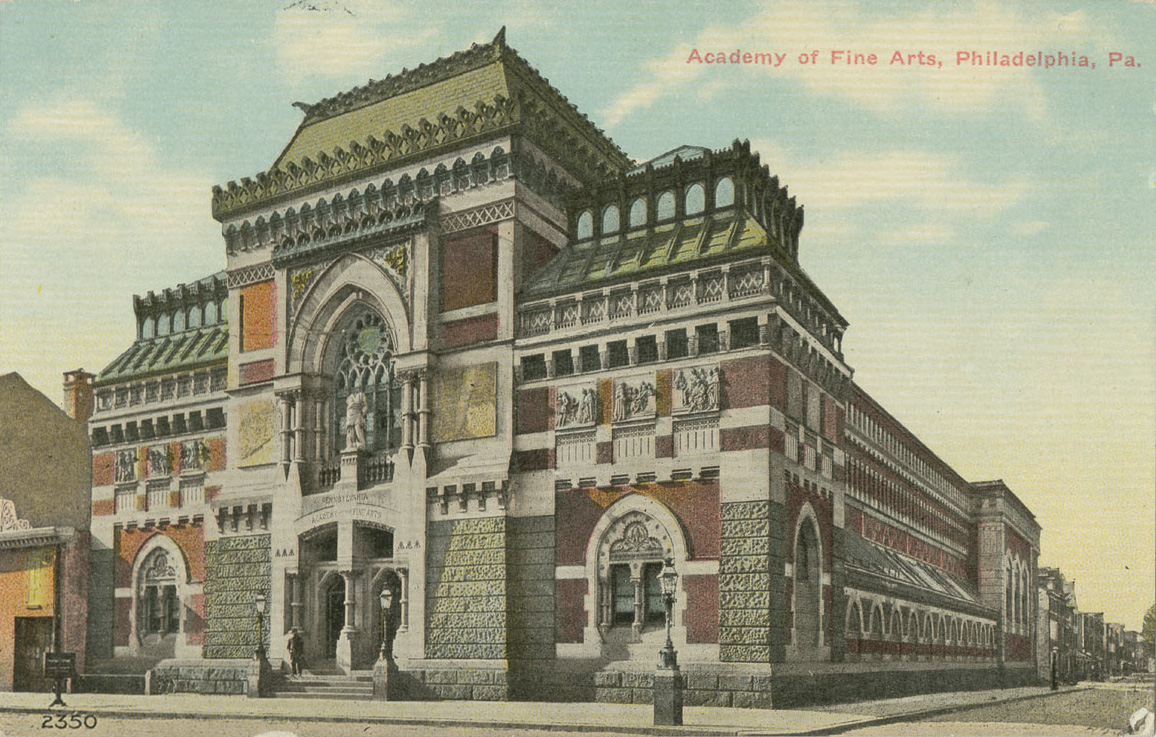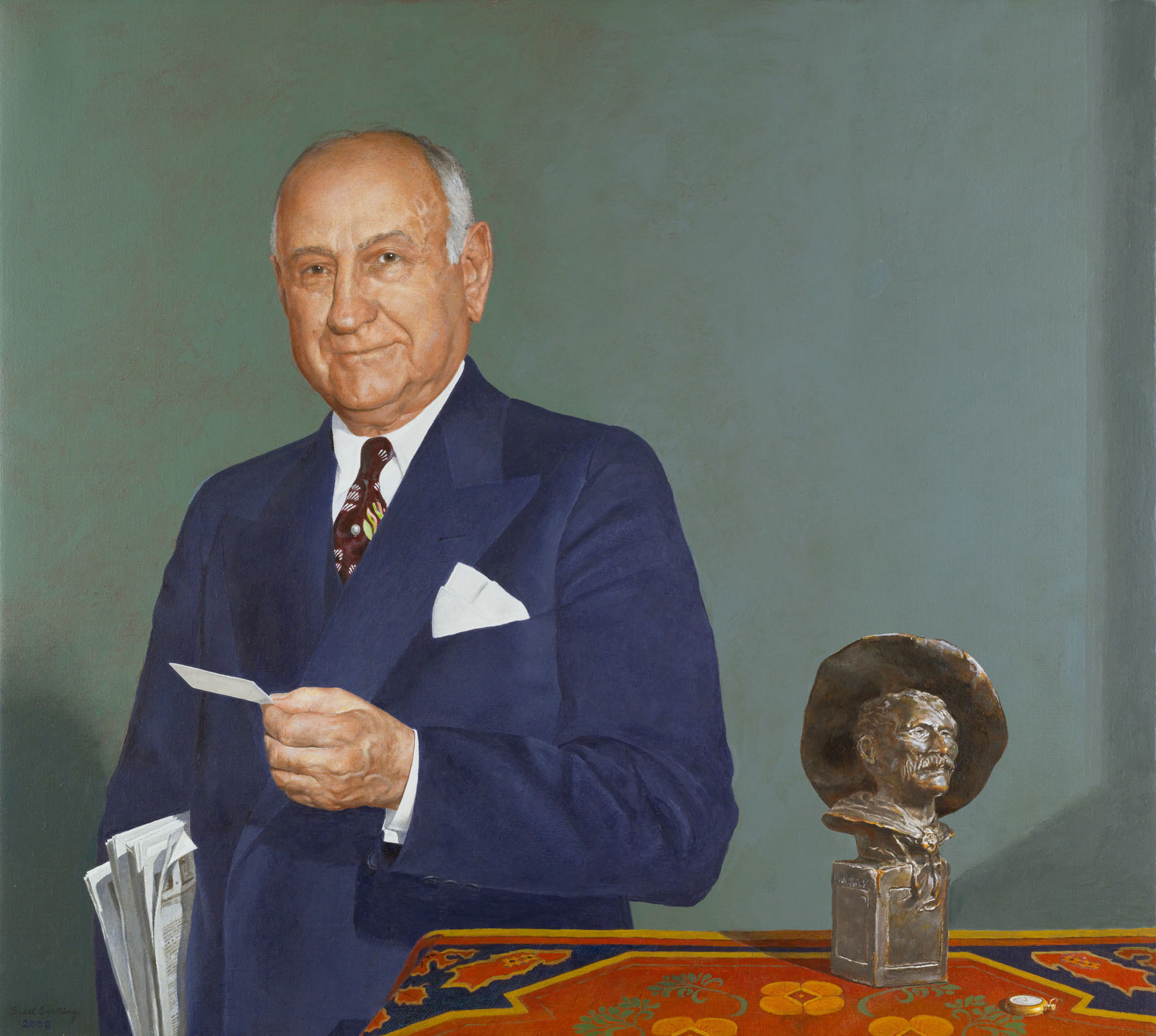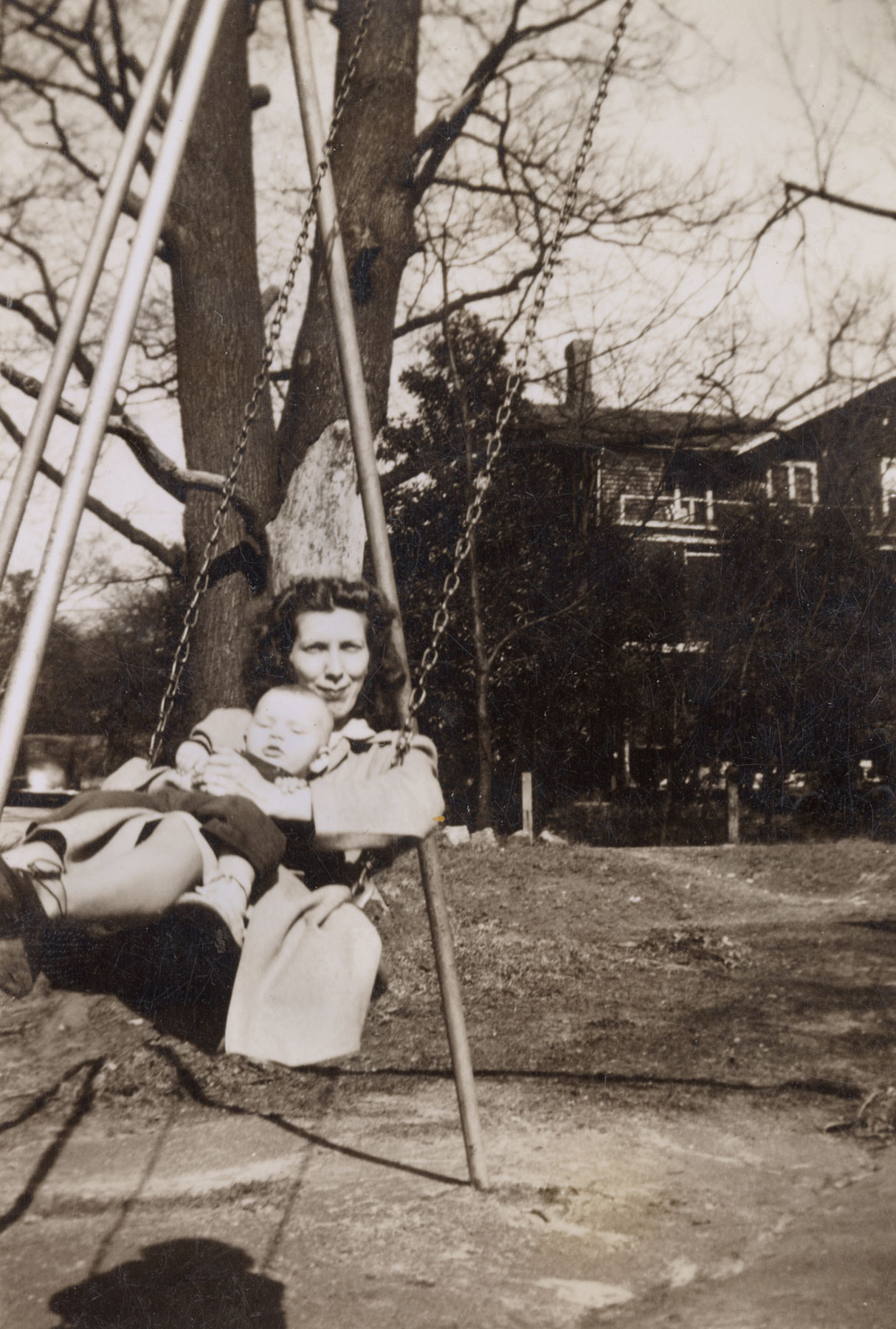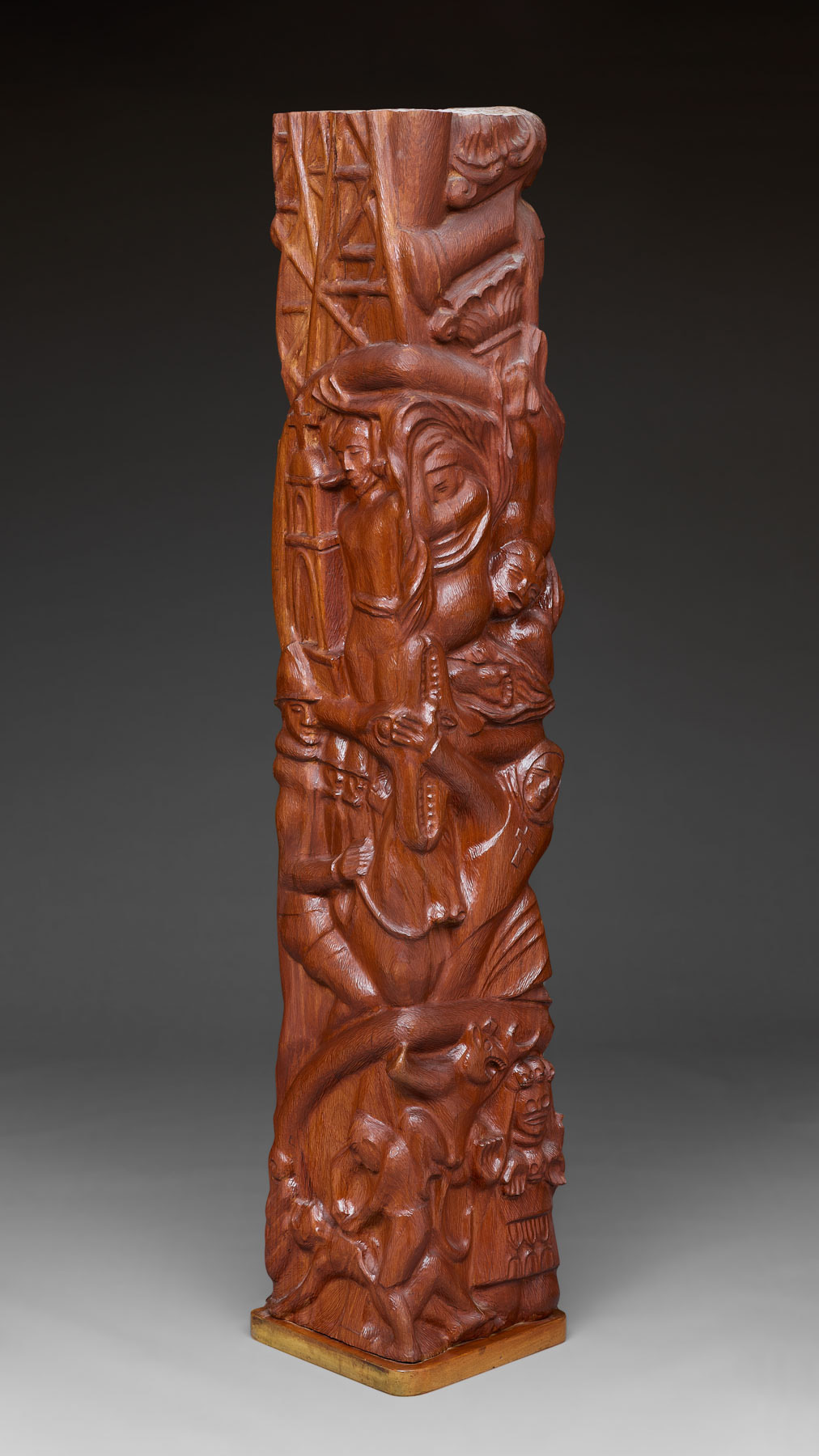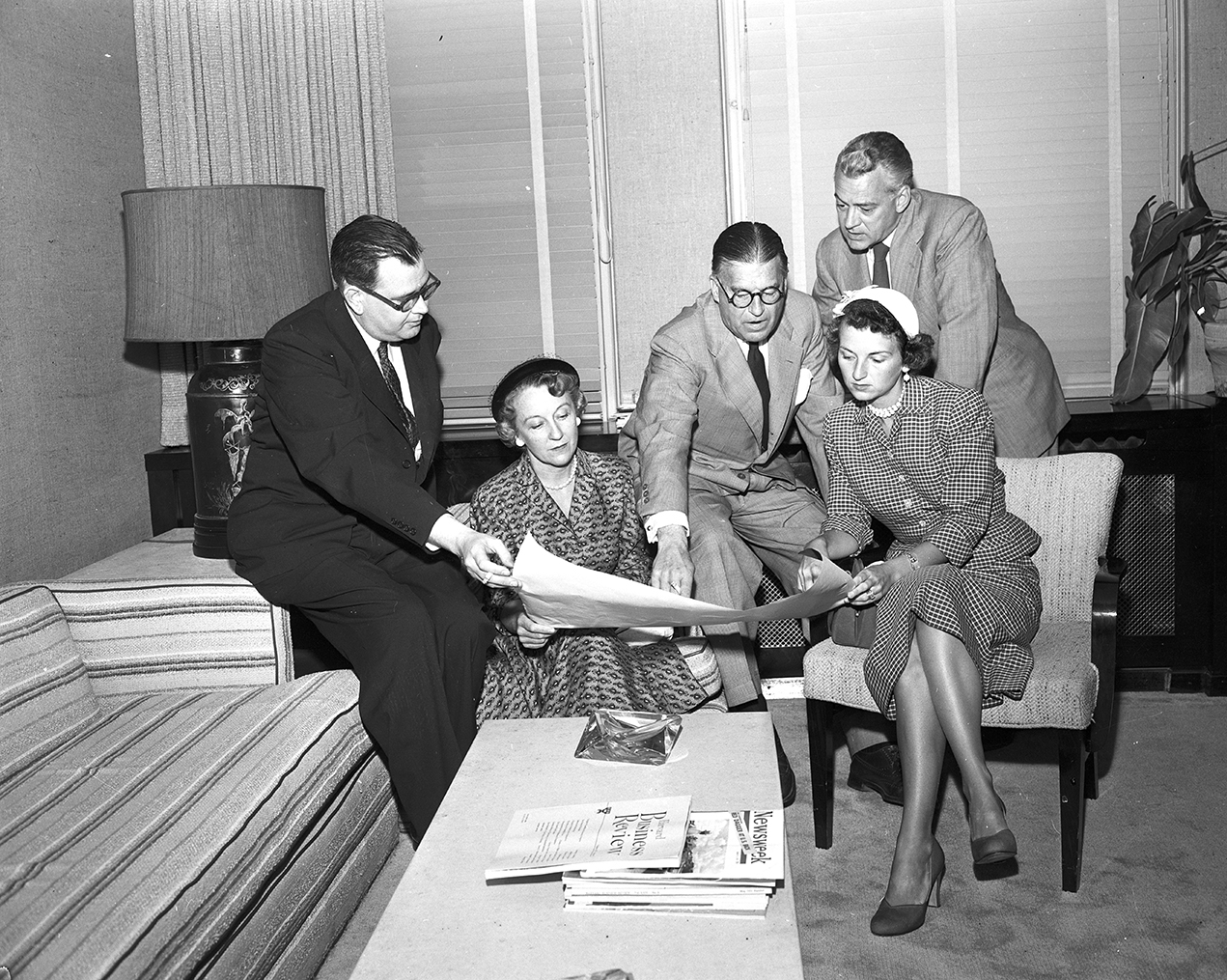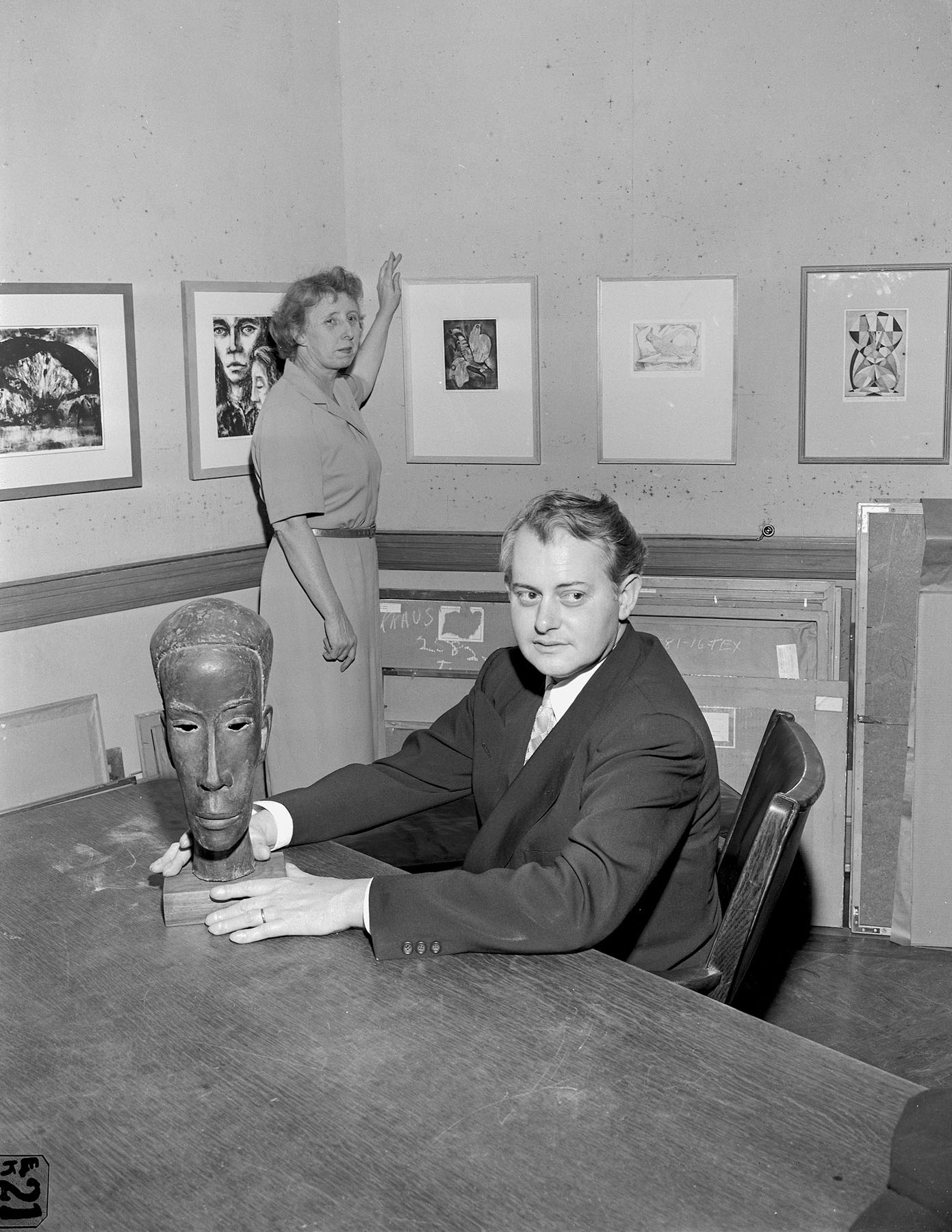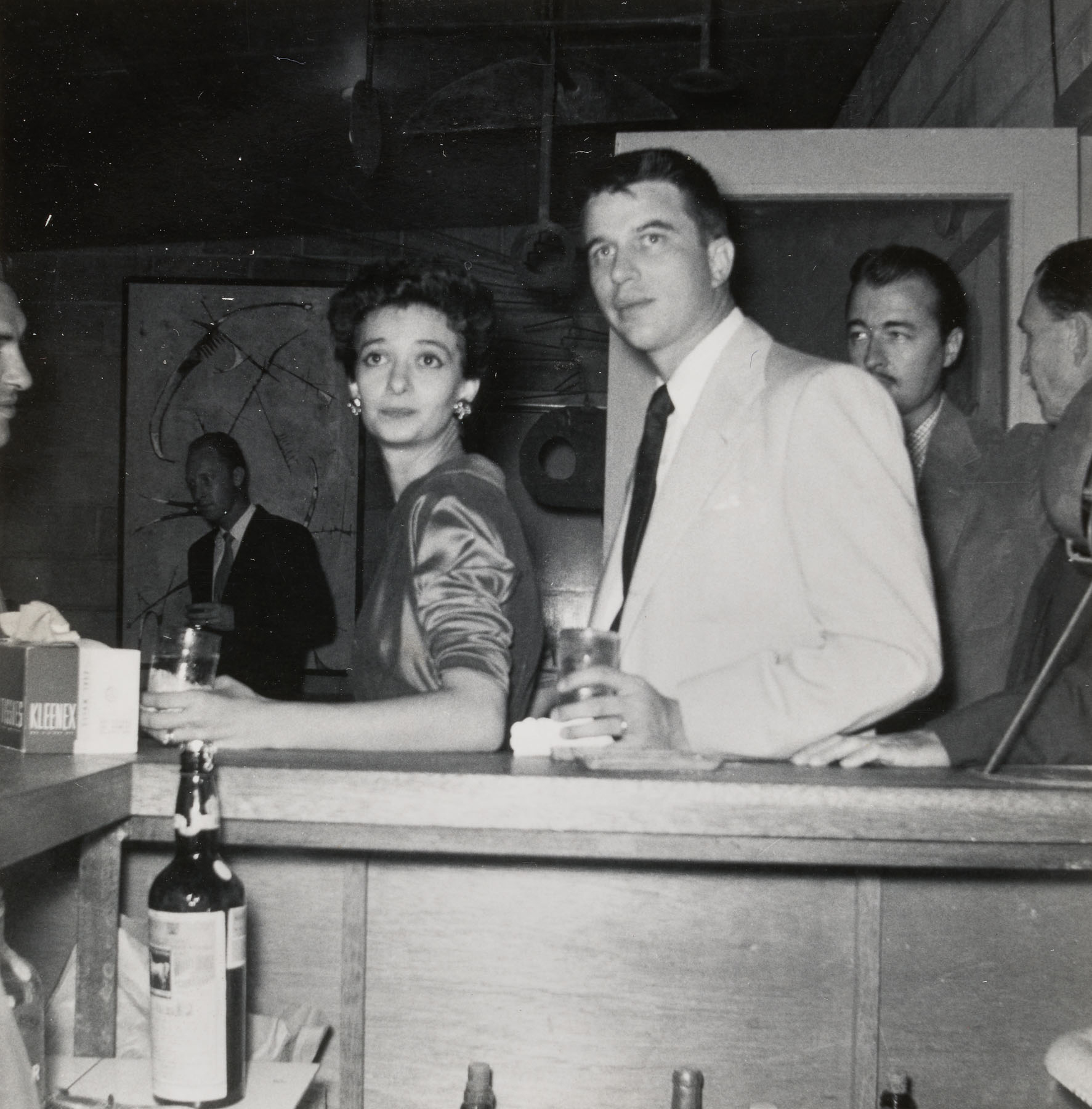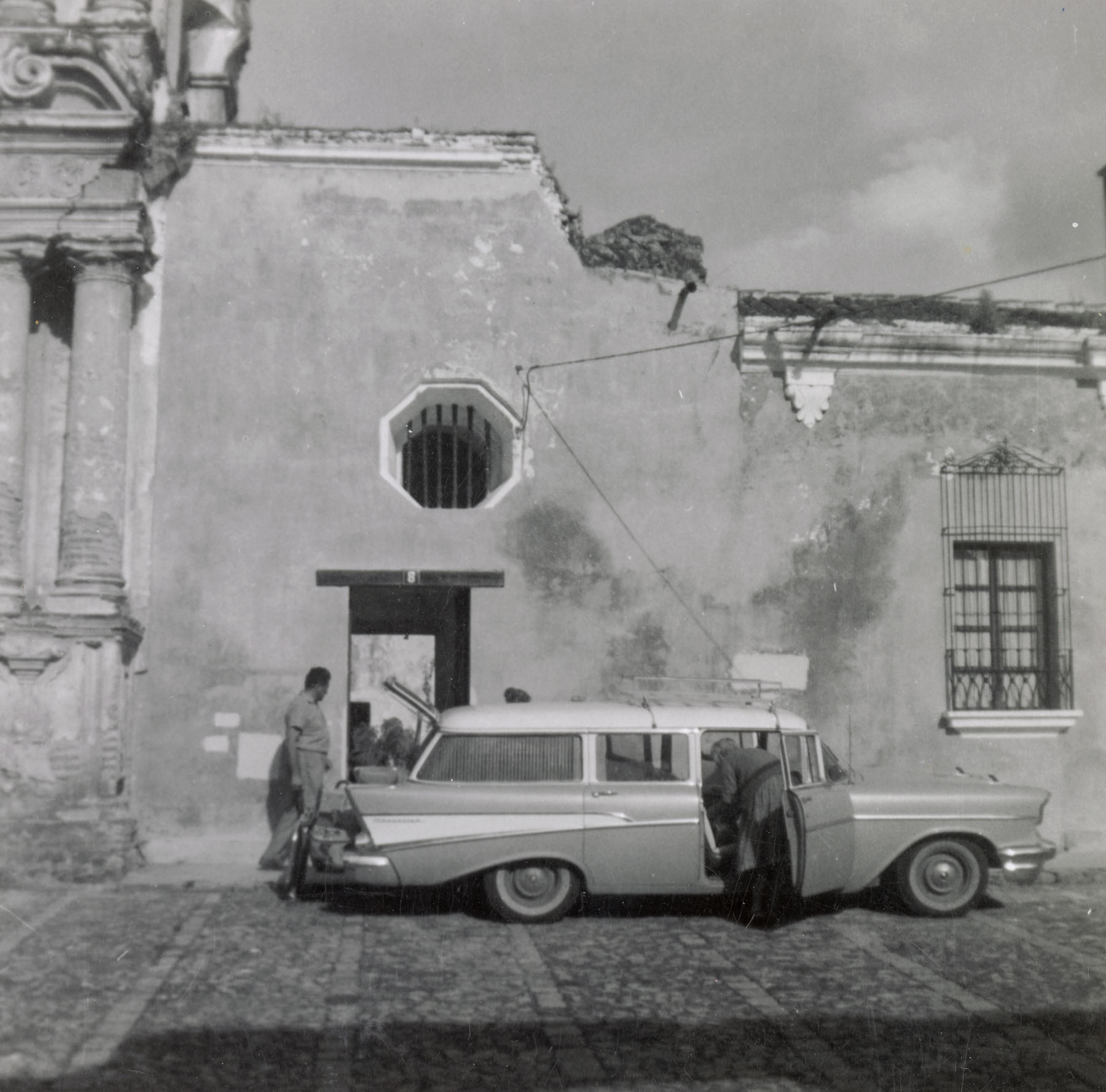Figures and Fortunes: A Chronology of the Fort Worth Art Scene and Charles Truett Williams
- S. Janelle Montgomery
Fort Worth Art Scene |
Charles Truett Williams
1910
 Mrs. Charles Scheuber (née Jennie Scott) and Mrs. M.P. Bewley (née Hallie Samuel), among others, establish the Fort Worth Art Association (FWAA) to organize exhibitions and acquisitions for the art gallery in the public library.1
Mrs. Charles Scheuber (née Jennie Scott) and Mrs. M.P. Bewley (née Hallie Samuel), among others, establish the Fort Worth Art Association (FWAA) to organize exhibitions and acquisitions for the art gallery in the public library.1
1910–19
 Many of the group that will come to be known as the Fort Worth Circle are born in Fort Worth, including Veronica Helfensteller (1910–1964, Tucson), E. Dickson Reeder (1912–1970), Bror A. Utter (1913–1993), and William (Bill) Bomar Jr. (1919–1991, Ranchos de Taos).2
Many of the group that will come to be known as the Fort Worth Circle are born in Fort Worth, including Veronica Helfensteller (1910–1964, Tucson), E. Dickson Reeder (1912–1970), Bror A. Utter (1913–1993), and William (Bill) Bomar Jr. (1919–1991, Ranchos de Taos).2
March 24, 1918
 Charles Truett Williams is born in Weatherford, Texas, to Thomas Lafayette (T.L.) Williams, a farmer and later a stonemason, and Lucy Hurst Williams, a housewife.3
Charles Truett Williams is born in Weatherford, Texas, to Thomas Lafayette (T.L.) Williams, a farmer and later a stonemason, and Lucy Hurst Williams, a housewife.3
1924
 Fort Worth public schools, which already provide art instruction in White elementary schools, begin offering art as an elective in White high schools.4
Fort Worth public schools, which already provide art instruction in White elementary schools, begin offering art as an elective in White high schools.4
October 1932
 The Texas School of the Arts (later the Fort Worth School of Fine Arts) opens. In its studios, several Fort Worth Circle artists form enduring friendships. Sallie Gillespie (1898–1991, Taos), Blanche McVeigh (1895, St. Charles, Missouri–1970), and Evaline Sellors (1903–1995) found the school. They all studied at the Pennsylvania Academy of the Fine Arts (PAFA) (fig. 5.1) and in Europe.5
The Texas School of the Arts (later the Fort Worth School of Fine Arts) opens. In its studios, several Fort Worth Circle artists form enduring friendships. Sallie Gillespie (1898–1991, Taos), Blanche McVeigh (1895, St. Charles, Missouri–1970), and Evaline Sellors (1903–1995) found the school. They all studied at the Pennsylvania Academy of the Fine Arts (PAFA) (fig. 5.1) and in Europe.5
March 1935
 New York gallerist Bertram Newhouse lends an exhibition to the FWAA. Kay and Velma (née Fuller) Kimbell (figs. 5.2 and 5.3) make their first significant art purchase, The Artist’s Children, by Sir William Beechey, from the show.6 The same year, Amon G. Carter Sr. (fig. 5.4) begins collecting, acquiring Frederic Remington’s His First Lesson from Newhouse.7 For the next three decades, Newhouse supports the FWAA, making regular loans, assisting with conservation needs, and funding awards.
New York gallerist Bertram Newhouse lends an exhibition to the FWAA. Kay and Velma (née Fuller) Kimbell (figs. 5.2 and 5.3) make their first significant art purchase, The Artist’s Children, by Sir William Beechey, from the show.6 The same year, Amon G. Carter Sr. (fig. 5.4) begins collecting, acquiring Frederic Remington’s His First Lesson from Newhouse.7 For the next three decades, Newhouse supports the FWAA, making regular loans, assisting with conservation needs, and funding awards.
June 1935–September 1937
 After graduating from Mineral Wells High School, Williams works in his father’s construction business.8 The industry contacts prove helpful when Charles begins sculpting.9
After graduating from Mineral Wells High School, Williams works in his father’s construction business.8 The industry contacts prove helpful when Charles begins sculpting.9
1937–38
 Williams attends Weatherford Junior College.10
Williams attends Weatherford Junior College.10
1938–41
 Williams studies art, math, and physics at Hardin-Simmons University in Abilene, Texas.11
Williams studies art, math, and physics at Hardin-Simmons University in Abilene, Texas.11
June 15, 1939
 The FWAA celebrates its larger gallery space in the new public library building with a show dedicated to local artists. The exhibition, colloquially known as the Local, becomes an annual event through 1977. Eminent art professionals from outside Fort Worth judge the entries, and for many years artists of the Fort Worth Circle dominate the awards.12 The 1939 show includes the work of one Black artist, Gerald R. Boyd, who is unable to view the exhibition due to the library’s Whites Only policy.13
The FWAA celebrates its larger gallery space in the new public library building with a show dedicated to local artists. The exhibition, colloquially known as the Local, becomes an annual event through 1977. Eminent art professionals from outside Fort Worth judge the entries, and for many years artists of the Fort Worth Circle dominate the awards.12 The 1939 show includes the work of one Black artist, Gerald R. Boyd, who is unable to view the exhibition due to the library’s Whites Only policy.13
Fall 1939
 Sellors teaches evening classes in sculpture at Texas Christian University (TCU). PAFA alumnus Samuel P. Ziegler chairs the art department.14
Sellors teaches evening classes in sculpture at Texas Christian University (TCU). PAFA alumnus Samuel P. Ziegler chairs the art department.14
February–March 1940
 Of the ninety-eight artists in the first Texas General Exhibition, the five from Fort Worth are all women, including Helfensteller, McVeigh, and Sellors.15
Of the ninety-eight artists in the first Texas General Exhibition, the five from Fort Worth are all women, including Helfensteller, McVeigh, and Sellors.15
Fall 1940
 Reeder and his wife, Flora Blanc Reeder (1916, New York–1995), move to Fort Worth after living in Paris and New York. For more than a decade, their Saturday evening salons enliven the Fort Worth art community.16
Reeder and his wife, Flora Blanc Reeder (1916, New York–1995), move to Fort Worth after living in Paris and New York. For more than a decade, their Saturday evening salons enliven the Fort Worth art community.16
1941
 Bomar moves to New York City. He returns to Fort Worth frequently and remains a prominent part of the Fort Worth Circle.17
Bomar moves to New York City. He returns to Fort Worth frequently and remains a prominent part of the Fort Worth Circle.17
February 27, 1941
 Williams and Virginia Louise Beaver marry.18 The couple settle in Atlanta, where he works as a civilian district engineer for the Army Corps of Engineers and takes life drawing at the High Museum and engineering courses at Georgia Tech.19 In November they have a son, Karl Boyd (fig. 5.5).20
Williams and Virginia Louise Beaver marry.18 The couple settle in Atlanta, where he works as a civilian district engineer for the Army Corps of Engineers and takes life drawing at the High Museum and engineering courses at Georgia Tech.19 In November they have a son, Karl Boyd (fig. 5.5).20
March 3, 1942
 Samuel B. Cantey III becomes president of the FWAA (fig. 5.6).21 Cantey and his wife, Betsy Lee Cantey, are passionate supporters of local arts and Fort Worth Circle artists.22 Cantey remains active in FWAA leadership until his death in 1973.23
Samuel B. Cantey III becomes president of the FWAA (fig. 5.6).21 Cantey and his wife, Betsy Lee Cantey, are passionate supporters of local arts and Fort Worth Circle artists.22 Cantey remains active in FWAA leadership until his death in 1973.23
1943
 Kelly Fearing (1918, Fordyce, Arkansas–2011, Austin) moves to Fort Worth from Louisiana and soon becomes part of the Fort Worth Circle.24
Kelly Fearing (1918, Fordyce, Arkansas–2011, Austin) moves to Fort Worth from Louisiana and soon becomes part of the Fort Worth Circle.24
May 4, 1943
 The FWAA begins holding annual solo exhibitions dedicated to local artists with a show of works by McVeigh.25
The FWAA begins holding annual solo exhibitions dedicated to local artists with a show of works by McVeigh.25
August 1943–January 1945
 Williams works in Mobile, Alabama, briefly before being drafted into the army in March 1944. He is sent to Fort Belvoir, Virginia, for training.26
Williams works in Mobile, Alabama, briefly before being drafted into the army in March 1944. He is sent to Fort Belvoir, Virginia, for training.26
September 18–October 7, 1944
 The Weyhe Gallery in New York City exhibits works by Blanc, Bomar, Helfensteller, Reeder, Utter, and Donald Vogel (1917, Milwaukee–2004, Dallas) in Six Texas Painters.27
The Weyhe Gallery in New York City exhibits works by Blanc, Bomar, Helfensteller, Reeder, Utter, and Donald Vogel (1917, Milwaukee–2004, Dallas) in Six Texas Painters.27
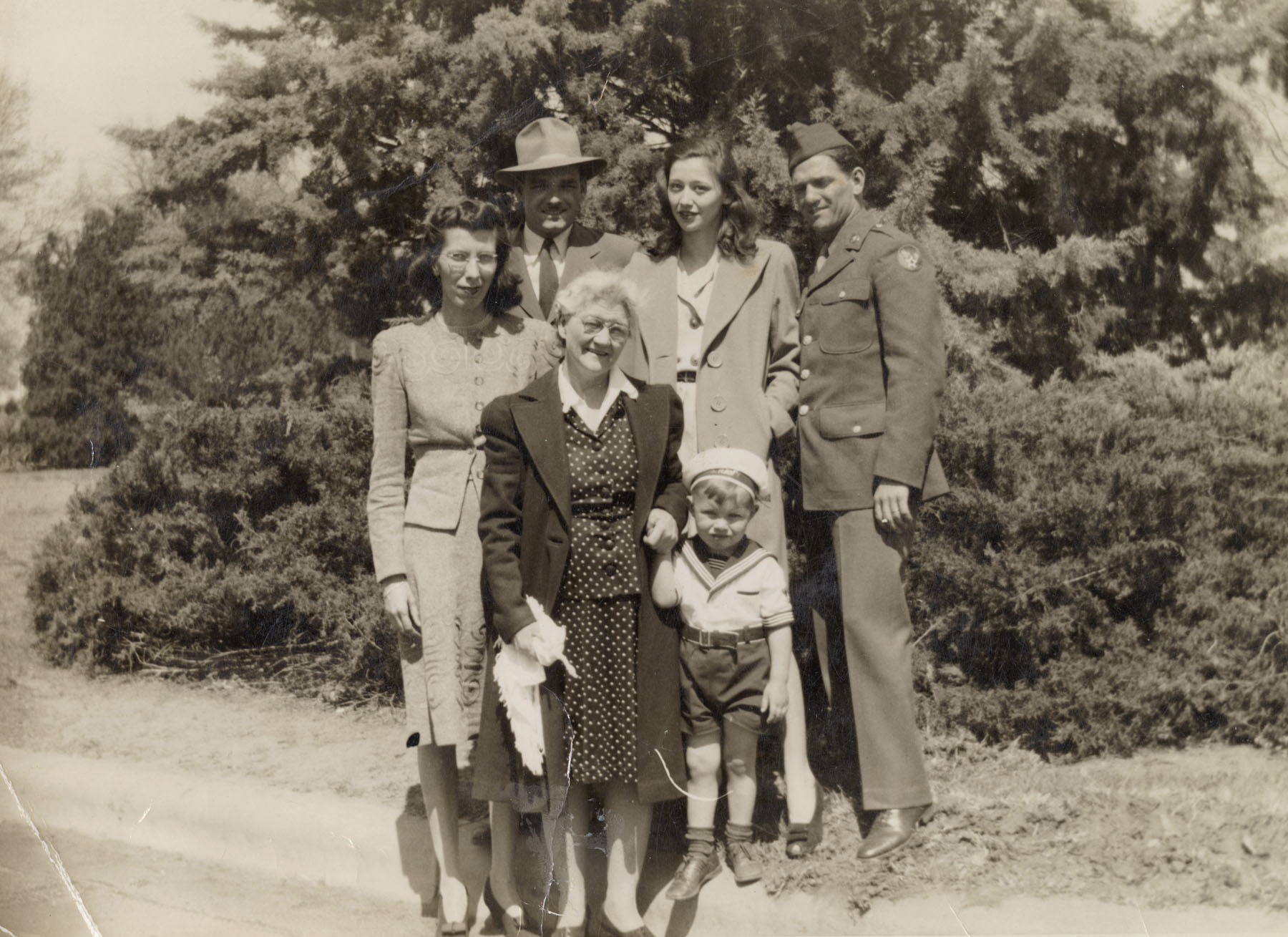
February 1945–June 2, 1946
 Williams is stationed in Paris with the Army Corps of Engineers. After his discharge, he rejoins Louise in Atlanta, and they make a trip to Texas to see family and friends (fig. 5.7).28
Williams is stationed in Paris with the Army Corps of Engineers. After his discharge, he rejoins Louise in Atlanta, and they make a trip to Texas to see family and friends (fig. 5.7).28
Spring 1945
 Cynthia Brants (1924–2006), part of the second-generation of the Fort Worth Circle, returns to Fort Worth after graduating from Sarah Lawrence College, where Ruth Carter, daughter of Amon G. and Nenetta Burton Carter, is a classmate.29
Cynthia Brants (1924–2006), part of the second-generation of the Fort Worth Circle, returns to Fort Worth after graduating from Sarah Lawrence College, where Ruth Carter, daughter of Amon G. and Nenetta Burton Carter, is a classmate.29
June 1945
 Gillespie becomes secretary (and de facto director) of the FWAA gallery (fig. 5.8), and Sellors, Reeder, and Utter begin teaching classes there.30
Gillespie becomes secretary (and de facto director) of the FWAA gallery (fig. 5.8), and Sellors, Reeder, and Utter begin teaching classes there.30
October 3, 1945
 Fort Worth voters approve a bond issue to build an art museum.31
Fort Worth voters approve a bond issue to build an art museum.31
August 12, 1947
 Williams’s job in Atlanta becomes a casualty of a reduction in force.32
Williams’s job in Atlanta becomes a casualty of a reduction in force.32
August 28, 1947
 Louise Williams dies of viral pneumonia.33 Charles requests a transfer to North Texas, where his parents can help raise Karl.34
Louise Williams dies of viral pneumonia.33 Charles requests a transfer to North Texas, where his parents can help raise Karl.34

Fall 1947
 TCU begins offering Bachelor’s and Master’s degrees in Fine Arts. Zeigler hires John W. (Jack) Erickson (1919, Monmouth, Illinois–1997, Seattle) as an instructor (fig. 5.9).35
TCU begins offering Bachelor’s and Master’s degrees in Fine Arts. Zeigler hires John W. (Jack) Erickson (1919, Monmouth, Illinois–1997, Seattle) as an instructor (fig. 5.9).35
Fall 1947
 Fearing moves to Austin to take a position on the art faculty at the University of Texas.36
Fearing moves to Austin to take a position on the art faculty at the University of Texas.36
October 1, 1947
 The Corps of Engineers approves Williams’s transfer to Dallas.37 He completes the move by mid-month, commuting to Dallas from Fort Worth, where he sets up a studio in the garage behind the family’s house at 4723 El Campo.38
The Corps of Engineers approves Williams’s transfer to Dallas.37 He completes the move by mid-month, commuting to Dallas from Fort Worth, where he sets up a studio in the garage behind the family’s house at 4723 El Campo.38
1948
 Helfensteller moves to Santa Fe.39
Helfensteller moves to Santa Fe.39
Probably January 194840
 Williams enrolls in the TCU BFA program, where he meets James (Jack) Boynton (1928–2010, Houston). The two begin an artistic dialogue that lasts until Williams’s death.41 Erickson also becomes a lifelong friend.42 Boynton later introduces Williams to aspiring artists Bob Cunningham (1929–1991), Erv Harrison (1925, Graham, Texas–1977, South Bend, Texas) and Boynton’s future wife, Ann Williams (née Hilda Anne Williams, 1930, [De Leon, Texas]–1964, [New Mexico]).43
Williams enrolls in the TCU BFA program, where he meets James (Jack) Boynton (1928–2010, Houston). The two begin an artistic dialogue that lasts until Williams’s death.41 Erickson also becomes a lifelong friend.42 Boynton later introduces Williams to aspiring artists Bob Cunningham (1929–1991), Erv Harrison (1925, Graham, Texas–1977, South Bend, Texas) and Boynton’s future wife, Ann Williams (née Hilda Anne Williams, 1930, [De Leon, Texas]–1964, [New Mexico]).43
March 20, 1948
 Robert P. Windfohr becomes president of the FWAA and remains active in FWAA leadership until his death in 1964.44 Windfohr and his wife, Anne Valliant Burnett Windfohr (later Tandy), assemble one of the country’s finest collections of modern art.45
Robert P. Windfohr becomes president of the FWAA and remains active in FWAA leadership until his death in 1964.44 Windfohr and his wife, Anne Valliant Burnett Windfohr (later Tandy), assemble one of the country’s finest collections of modern art.45
June 1–15, 1948
 Williams participates in the FWAA’s GI student art show.46
Williams participates in the FWAA’s GI student art show.46
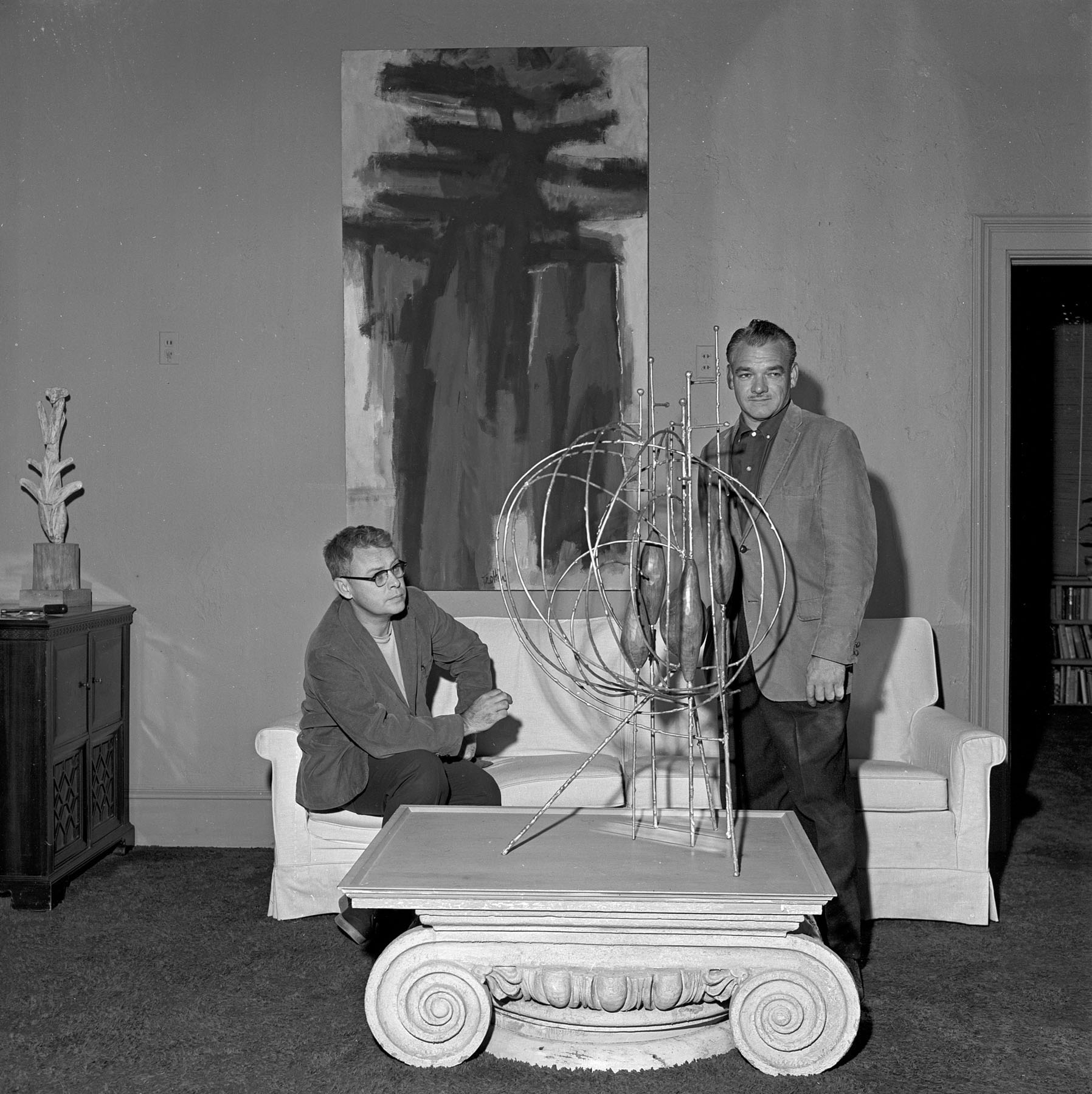
Fall 1948
 McKie Trotter III (1918, Manchester, Georgia–1999) joins the art faculty at Texas Wesleyan College (TWC, now Texas Wesleyan University) (fig. 5.10). In 1954 he leaves TWC for the TCU art department.47
McKie Trotter III (1918, Manchester, Georgia–1999) joins the art faculty at Texas Wesleyan College (TWC, now Texas Wesleyan University) (fig. 5.10). In 1954 he leaves TWC for the TCU art department.47
May 16, 1949
 Flooding devastates Fort Worth.48 Williams works with the city to salvage uprooted black walnut trees.49 Sculptures made from the wood are accepted into the 1949–50 and 1950–51 Texas General Exhibitions; one wins the purchase award at Kansas City’s Mid-America Annual in October 1950 (pl. 3).50
Flooding devastates Fort Worth.48 Williams works with the city to salvage uprooted black walnut trees.49 Sculptures made from the wood are accepted into the 1949–50 and 1950–51 Texas General Exhibitions; one wins the purchase award at Kansas City’s Mid-America Annual in October 1950 (pl. 3).50
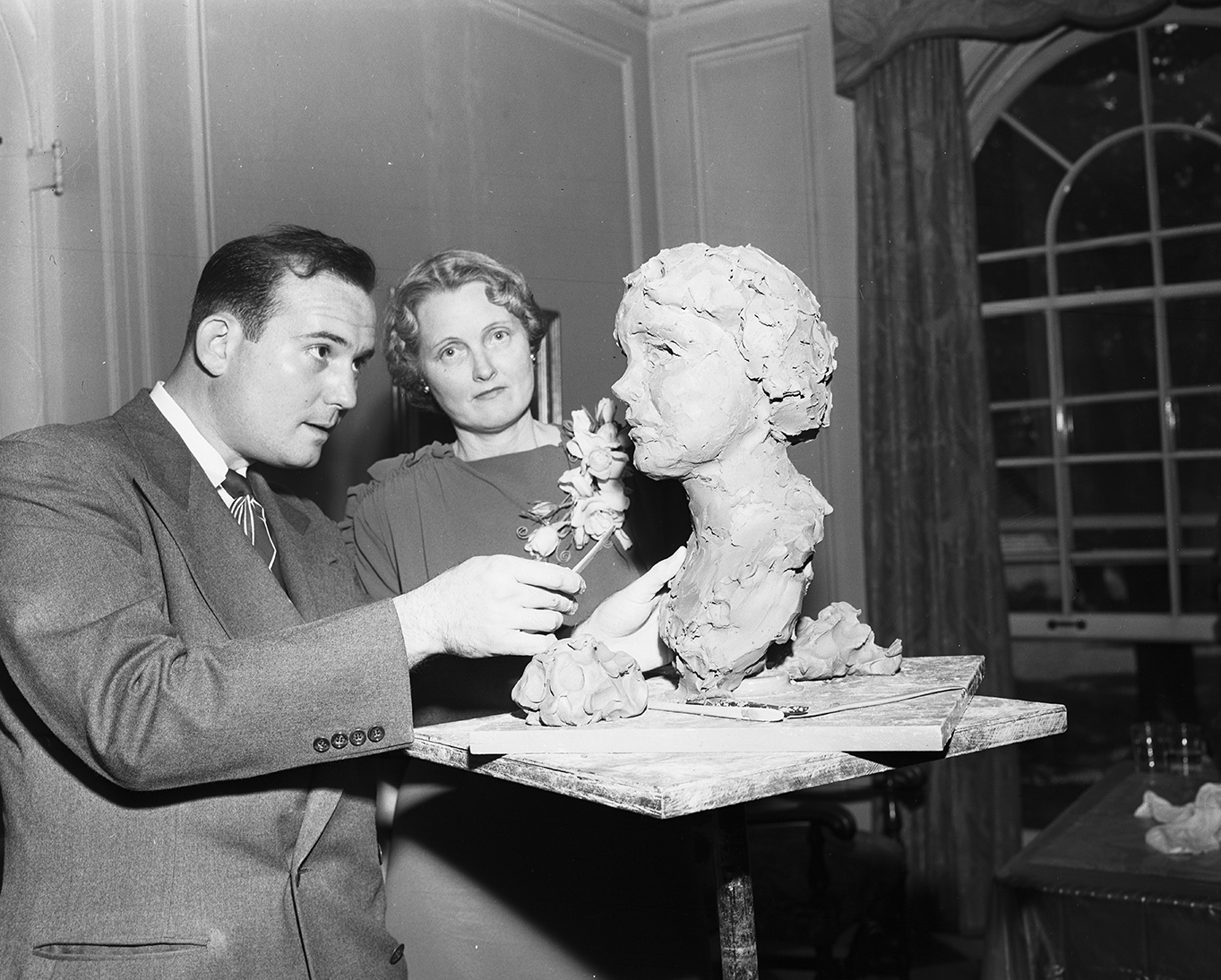
Fall 1949
 TCU’s art department moves into a new fine arts building (see fig. 4.6) and hires Leonard M. Logan III (1922, New York–1996, Norman, Oklahoma), the first full-time instructor with sculpture expertise (fig. 5.11).51
TCU’s art department moves into a new fine arts building (see fig. 4.6) and hires Leonard M. Logan III (1922, New York–1996, Norman, Oklahoma), the first full-time instructor with sculpture expertise (fig. 5.11).51
1950
 Williams visits Taos. He makes several sculptures, including Lava, from the area’s volcanic rock (see fig. 4.8).52
Williams visits Taos. He makes several sculptures, including Lava, from the area’s volcanic rock (see fig. 4.8).52
March 1950
 Williams appears in the Local for the first time. Sellors wins the sculpture award, which is sponsored by Newhouse, and Logan receives an honorable mention.53
Williams appears in the Local for the first time. Sellors wins the sculpture award, which is sponsored by Newhouse, and Logan receives an honorable mention.53
April 10–22, 1950
 One of the few commercial galleries in Fort Worth, Lon Hellums, has a show of works by Boynton, his wife Ann, Erickson, Trotter, and Williams, among others.54 McVeigh is director of another, Collins Gallery.55
One of the few commercial galleries in Fort Worth, Lon Hellums, has a show of works by Boynton, his wife Ann, Erickson, Trotter, and Williams, among others.54 McVeigh is director of another, Collins Gallery.55
June 1950
 Gillespie resigns from the FWAA and moves to Taos.56
Gillespie resigns from the FWAA and moves to Taos.56
July 1950
 Williams places first in wood sculpture with Abstract Figure No. 1 at Dallas’s First Annual Exhibition of Crafts and Sculpture.57
Williams places first in wood sculpture with Abstract Figure No. 1 at Dallas’s First Annual Exhibition of Crafts and Sculpture.57
Fall 1950
 TCU’s art department sees increased enrollments, a trend that continues at TCU and TWC through the 1950s.58
TCU’s art department sees increased enrollments, a trend that continues at TCU and TWC through the 1950s.58
November 5–19, 1950
 Octavio Medellín (1907, Matahuala, Mexico–1999, Dallas) shows History of Mexico at the FWAA gallery (fig. 5.12). Frank Paxton Jr., a lumber company executive in Kansas City, commissioned the large mahogany sculpture.59
Octavio Medellín (1907, Matahuala, Mexico–1999, Dallas) shows History of Mexico at the FWAA gallery (fig. 5.12). Frank Paxton Jr., a lumber company executive in Kansas City, commissioned the large mahogany sculpture.59
December 4–31, 1950
 The FWAA continues annual solo exhibitions of local artists with works by Brants.60 McVeigh shows in 1952, Utter in 1953, Trotter in 1954, Boynton in 1955, and Williams in 1957.61
The FWAA continues annual solo exhibitions of local artists with works by Brants.60 McVeigh shows in 1952, Utter in 1953, Trotter in 1954, Boynton in 1955, and Williams in 1957.61
February 4–June 24, 1951
 Williams takes a leave of absence from the corps to focus on his education.62
Williams takes a leave of absence from the corps to focus on his education.62
March 25, 1951
 Williams receives the Newhouse sculpture prize for Continuum (pl. 4) at the Local, and Sellors gets an honorable mention.63
Williams receives the Newhouse sculpture prize for Continuum (pl. 4) at the Local, and Sellors gets an honorable mention.63
April 1951
 Betty McLean (later Blake) opens a contemporary art gallery in Dallas; its manager is Donald Vogel.64 They soon plan shows of works by Bomar, Utter, and Fearing.65
Betty McLean (later Blake) opens a contemporary art gallery in Dallas; its manager is Donald Vogel.64 They soon plan shows of works by Bomar, Utter, and Fearing.65
May 27, 1951
 Williams’s Reflections and Revelations are accepted by the 57th Annual Exhibition of Western Art in Denver.66
Williams’s Reflections and Revelations are accepted by the 57th Annual Exhibition of Western Art in Denver.66
June 1951
 The FWAA announces Daniel Defenbacher, formerly of the Walker Art Center in Minneapolis, as its first official director (fig. 5.13).67 Soon after he arrives, Defenbacher announces he will organize an ambitious group show, Texas Wildcat. It opens in October and travels to Dallas and San Francisco.68 Defenbacher and Williams become friends and stay in touch long after Defenbacher’s departure.
The FWAA announces Daniel Defenbacher, formerly of the Walker Art Center in Minneapolis, as its first official director (fig. 5.13).67 Soon after he arrives, Defenbacher announces he will organize an ambitious group show, Texas Wildcat. It opens in October and travels to Dallas and San Francisco.68 Defenbacher and Williams become friends and stay in touch long after Defenbacher’s departure.
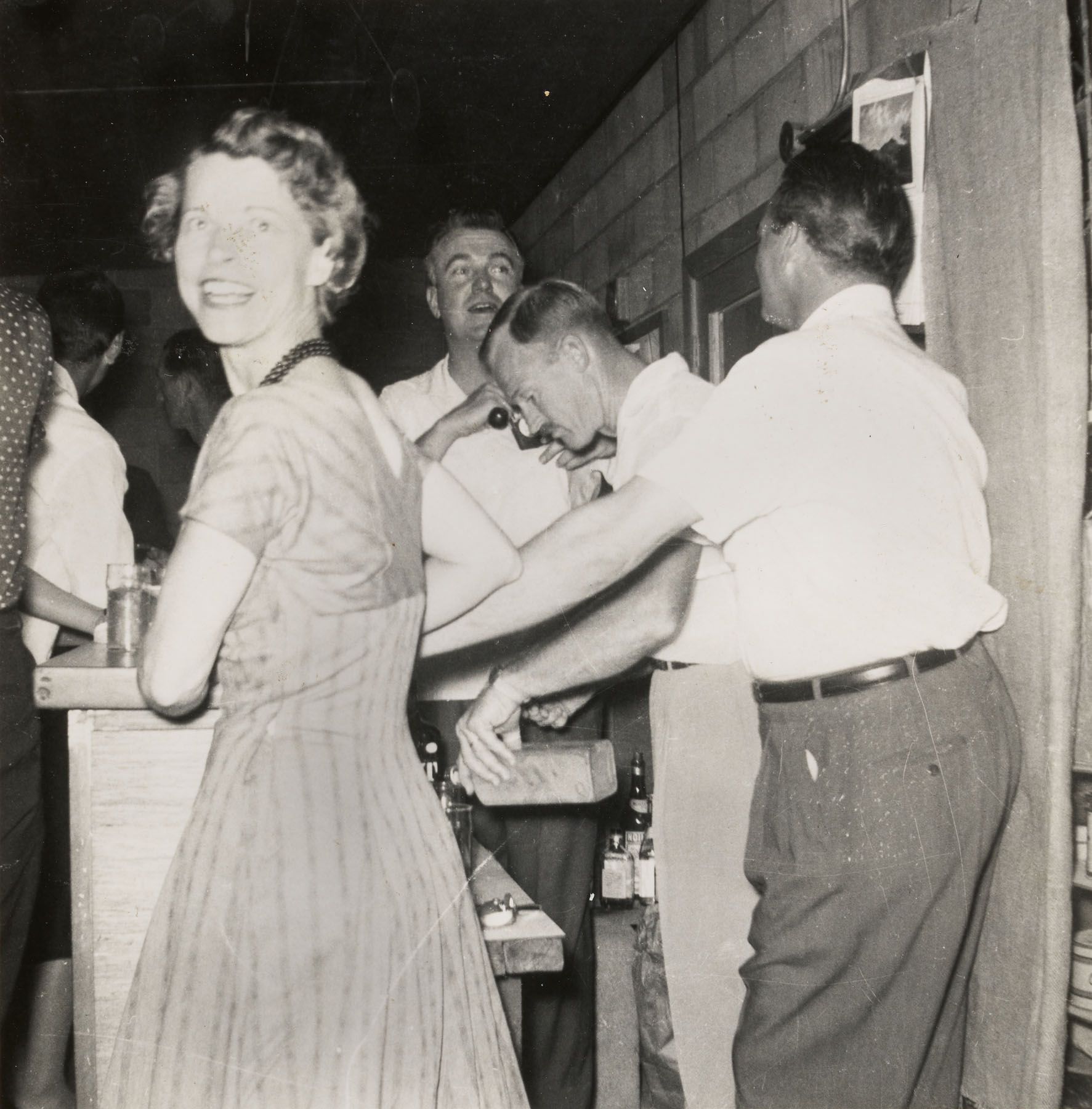
August 31, 1951
 Williams and Anita Stuart McConnell, a teacher, marry (fig. 5.14).69
Williams and Anita Stuart McConnell, a teacher, marry (fig. 5.14).69
November 1951
 The FWAA forms an “artists’ subsidiary” membership group to represent the profession on the board and in programming. Initial membership includes Utter and Brants as chairmen, and Erickson, McVeigh, Trotter, and Williams, among others.70
The FWAA forms an “artists’ subsidiary” membership group to represent the profession on the board and in programming. Initial membership includes Utter and Brants as chairmen, and Erickson, McVeigh, Trotter, and Williams, among others.70
October 21, 1951
 Logan, Sellors, and Williams have works accepted into the 13th annual Texas General; Williams’s Two Figures is recommended for purchase.71
Logan, Sellors, and Williams have works accepted into the 13th annual Texas General; Williams’s Two Figures is recommended for purchase.71
November 11, 1951
 Logan and Williams participate in the Mid-American Annual in Kansas City.72
Logan and Williams participate in the Mid-American Annual in Kansas City.72
1952
 Williams relocates to an old farm near what will become Lake Arlington. Artists, patrons, gallerists, museum professionals, and art students gather in his studio there to learn and play. Regular guests include the Boyntons, David Brownlow (1915–2008), Defenbacher, McLean, the Reeders, Sellors, Utter, and the Trotters. Visiting dignitaries such as Buckminster Fuller, Claes Oldenburg, and Isamu Noguchi stop by.73
Williams relocates to an old farm near what will become Lake Arlington. Artists, patrons, gallerists, museum professionals, and art students gather in his studio there to learn and play. Regular guests include the Boyntons, David Brownlow (1915–2008), Defenbacher, McLean, the Reeders, Sellors, Utter, and the Trotters. Visiting dignitaries such as Buckminster Fuller, Claes Oldenburg, and Isamu Noguchi stop by.73
By January 1952
 Williams and Medellín become friends.74
Williams and Medellín become friends.74
March 1, 1952
 Sellors wins first place in sculpture for Head at the Local (fig. 5.15). Brants and Boynton tie for first in painting.75
Sellors wins first place in sculpture for Head at the Local (fig. 5.15). Brants and Boynton tie for first in painting.75
June 16–September 27, 1952
 M. Knoedler & Company in New York dedicates a show to contemporary Texas art, including works by Bomar, Boynton, Brants, Erickson, McVeigh, Reeder, Trotter, Utter, and Williams.76 The show travels to the Contemporary Arts Museum Houston (CAMH) in October.77
M. Knoedler & Company in New York dedicates a show to contemporary Texas art, including works by Bomar, Boynton, Brants, Erickson, McVeigh, Reeder, Trotter, Utter, and Williams.76 The show travels to the Contemporary Arts Museum Houston (CAMH) in October.77
August 24, 1952
 Williams receives his BFA from TCU, the first awarded in sculpture.78
Williams receives his BFA from TCU, the first awarded in sculpture.78
September 9–October 7, 1952
 The FWAA shows Boynton, Erickson, Trotter, and Williams in Three Painters and a Sculptor.79
The FWAA shows Boynton, Erickson, Trotter, and Williams in Three Painters and a Sculptor.79
May 3, 1953
 Williams is the only sculptor to have work accepted into the Local. The Star-Telegram suggests the show heralds a new era: “It was something of a jolt to discover that some of the city’s artists who have achieved so much national recognition were completely omitted from the show or got in with only one entry.”80 In fact, during the 1950s many of the show’s awards go not to Fort Worth Circle artists but to faculty and students of TCU.81
Williams is the only sculptor to have work accepted into the Local. The Star-Telegram suggests the show heralds a new era: “It was something of a jolt to discover that some of the city’s artists who have achieved so much national recognition were completely omitted from the show or got in with only one entry.”80 In fact, during the 1950s many of the show’s awards go not to Fort Worth Circle artists but to faculty and students of TCU.81
December 1953
 Logan installs a sculpture in the cafeteria at Texas Instruments.82
Logan installs a sculpture in the cafeteria at Texas Instruments.82
1954
 Ted and Lucile (née Clements) Weiner complete their house and garden designed by New York architect Edward Larrabee Barnes, the first International Style home in the region (see fig. 4.11).83 The space allows the couple to expand their collection of modern sculpture, which becomes an important source of both inspiration and sales for Williams, including a fountain inspired by Asian calligraphy (pl. 11).84
Ted and Lucile (née Clements) Weiner complete their house and garden designed by New York architect Edward Larrabee Barnes, the first International Style home in the region (see fig. 4.11).83 The space allows the couple to expand their collection of modern sculpture, which becomes an important source of both inspiration and sales for Williams, including a fountain inspired by Asian calligraphy (pl. 11).84
1954–55
 Williams completes several commissions for the new Ridglea Country Club, including Odalisque (pl. 9) for the cocktail bar and a fountain for the entrance (pl. 10).85
Williams completes several commissions for the new Ridglea Country Club, including Odalisque (pl. 9) for the cocktail bar and a fountain for the entrance (pl. 10).85
February 7–March 14, 1954
 The Dallas Museum of Fine Arts (DMFA, now the Dallas Museum of Art) hosts Some Sculptors of the Region, including Logan, Medellín, Sellors, Williams, and ten others. The show travels to San Antonio, New Orleans, and Fort Worth.86
The Dallas Museum of Fine Arts (DMFA, now the Dallas Museum of Art) hosts Some Sculptors of the Region, including Logan, Medellín, Sellors, Williams, and ten others. The show travels to San Antonio, New Orleans, and Fort Worth.86
March 28, 1954
 Williams’s Ancient Vestige takes the top prize at the New Orleans Art Association show. His Jean Valjean (see fig. 3.24) received an award at the Local in February. Later in the year, he wins accolades in Denver.87
Williams’s Ancient Vestige takes the top prize at the New Orleans Art Association show. His Jean Valjean (see fig. 3.24) received an award at the Local in February. Later in the year, he wins accolades in Denver.87
May–July 1954
 Boynton, Erickson, and Trotter participate in the Guggenheim Museum’s Younger American Painters show.88 The show’s organizer, Guggenheim director James Johnson Sweeney, becomes director of the Museum of Fine Arts Houston (MFAH) in 1961.89
Boynton, Erickson, and Trotter participate in the Guggenheim Museum’s Younger American Painters show.88 The show’s organizer, Guggenheim director James Johnson Sweeney, becomes director of the Museum of Fine Arts Houston (MFAH) in 1961.89
October 8, 1954
 After years of fundraising and organizing by Cantey, Defenbacher, Windfohr, and others, and nearly a decade after a bond election authorized city funding, the FWAA gallery moves from the library into its own building. Designed by modernist Herbert Bayer, the Fort Worth Art Center (FWAC) becomes the cornerstone of the cultural district in Amon Carter Square (see figs. 4.9 and 4.10).90 Defenbacher attends the opening, then returns to Oakland; in May he had accepted the job of president at the California College of Arts and Crafts.91
After years of fundraising and organizing by Cantey, Defenbacher, Windfohr, and others, and nearly a decade after a bond election authorized city funding, the FWAA gallery moves from the library into its own building. Designed by modernist Herbert Bayer, the Fort Worth Art Center (FWAC) becomes the cornerstone of the cultural district in Amon Carter Square (see figs. 4.9 and 4.10).90 Defenbacher attends the opening, then returns to Oakland; in May he had accepted the job of president at the California College of Arts and Crafts.91
February 27, 1955
 TWC has a solo show of works by Gene Owens (b. 1931, Birdville, Texas), a recent graduate.92 As a student, he frequented life-drawing sessions held at Williams’s studio, where he could study nude models (which were prohibited on campus).93 Later in the year, he builds a burnout kiln, used in lost wax casting, in Williams’s yard.94
TWC has a solo show of works by Gene Owens (b. 1931, Birdville, Texas), a recent graduate.92 As a student, he frequented life-drawing sessions held at Williams’s studio, where he could study nude models (which were prohibited on campus).93 Later in the year, he builds a burnout kiln, used in lost wax casting, in Williams’s yard.94
April 20, 1955
 Henry Caldwell, formerly of the Corcoran Gallery of Art, becomes the director of the Fort Worth Art Center.95 He brings renewed energy to the classes, which painter Emily Guthrie Smith (1909–1989), Sellors, Trotter, and Utter teach for many years.96
Henry Caldwell, formerly of the Corcoran Gallery of Art, becomes the director of the Fort Worth Art Center.95 He brings renewed energy to the classes, which painter Emily Guthrie Smith (1909–1989), Sellors, Trotter, and Utter teach for many years.96
April 24, 1955
 Vogel and his wife, Peggy (née Margaret Mayer), open Valley House Gallery in Dallas. They call it a successor “in inspiration, policy and ideals” to Betty McLean’s gallery, which ceased operations in 1954.97
Vogel and his wife, Peggy (née Margaret Mayer), open Valley House Gallery in Dallas. They call it a successor “in inspiration, policy and ideals” to Betty McLean’s gallery, which ceased operations in 1954.97
May 29, 1955
 Boynton completes his MFA at TCU.98 In the fall, he takes a position at the University of Houston (fig. 5.16).99
Boynton completes his MFA at TCU.98 In the fall, he takes a position at the University of Houston (fig. 5.16).99
June 23, 1955
 Amon G. Carter Sr. dies. His will requests a museum be built to house his collection of works by Frederic Remington and Charles Russell.100
Amon G. Carter Sr. dies. His will requests a museum be built to house his collection of works by Frederic Remington and Charles Russell.100
August 26, 1955
 Williams receives his MFA from TCU in absentia as he recovers from a heart attack.101 He stays busy making mobiles. The scare motivates him to leave the corps to pursue sculpture full time.102
Williams receives his MFA from TCU in absentia as he recovers from a heart attack.101 He stays busy making mobiles. The scare motivates him to leave the corps to pursue sculpture full time.102
September 11, 1955
 Williams and TCU faculty member James Sterritt (1924, Morris, Illinois–1995, Eureka, Missouri) demonstrate contemporary sculpture technique at the FWAC.103
Williams and TCU faculty member James Sterritt (1924, Morris, Illinois–1995, Eureka, Missouri) demonstrate contemporary sculpture technique at the FWAC.103
October 24, 1955
 Williams lectures to the local American Institute of Architects (AIA) chapter.104
Williams lectures to the local American Institute of Architects (AIA) chapter.104
February 2, 1956
 Brownlow, Trotter, Utter, and Williams, along with a number of other area artists, organize the DFW Men of Art Guild to support each other and foster quality art. In the fall, the group opens a gallery in Dallas.105
Brownlow, Trotter, Utter, and Williams, along with a number of other area artists, organize the DFW Men of Art Guild to support each other and foster quality art. In the fall, the group opens a gallery in Dallas.105
April 8, 1956
 Williams receives an award for Eight (see fig. 4.18) at the MFAH Gulf-Caribbean Exhibition, which travels to Boston, Utica, Pittsburgh, Colorado Springs, and Dallas.106
Williams receives an award for Eight (see fig. 4.18) at the MFAH Gulf-Caribbean Exhibition, which travels to Boston, Utica, Pittsburgh, Colorado Springs, and Dallas.106
April 1–May 1, 1957
 Sculptors of Texas at the FWAC includes eighteen artists, most of them from Houston. Five are women, and one of the men, Carroll H. Simms (1924, Bald Knob, Arkansas–2010, Houston) is Black. Williams and Sellors represent Fort Worth.107
Sculptors of Texas at the FWAC includes eighteen artists, most of them from Houston. Five are women, and one of the men, Carroll H. Simms (1924, Bald Knob, Arkansas–2010, Houston) is Black. Williams and Sellors represent Fort Worth.107
April 4–28, 1957
 Jermayne MacAgy (née Noble) organizes Pacemakers at the CAMH, with work by Williams and Boynton, among others. Boynton introduces Williams to sculptor Jim Love (1927, Amarillo–2005, Houston).108 In 1960, Love introduces Williams to two other artists who become part of his circle, Roy Fridge (1927, Beeville, Texas–2007, Port Aransas, Texas) and David McManaway (1927, Chicago–2010, Dallas).109
Jermayne MacAgy (née Noble) organizes Pacemakers at the CAMH, with work by Williams and Boynton, among others. Boynton introduces Williams to sculptor Jim Love (1927, Amarillo–2005, Houston).108 In 1960, Love introduces Williams to two other artists who become part of his circle, Roy Fridge (1927, Beeville, Texas–2007, Port Aransas, Texas) and David McManaway (1927, Chicago–2010, Dallas).109
April 29, 1957
 LIFE magazine publishes a feature on Texas arts. Williams’s Battleground appears along with works by Sellors and Medellín.110
LIFE magazine publishes a feature on Texas arts. Williams’s Battleground appears along with works by Sellors and Medellín.110
May 3, 1957
 Temple Emanu-El in Dallas opens its new building. Williams and Medellín contribute to the interior decor.111
Temple Emanu-El in Dallas opens its new building. Williams and Medellín contribute to the interior decor.111
August 27, 1957
 The Dallas Fort Worth Turnpike (now I-30) opens.112 Williams and Medellín collaborate on Theme of Two Cities, a mosaic for the Turnpike Authority’s operations center.113
The Dallas Fort Worth Turnpike (now I-30) opens.112 Williams and Medellín collaborate on Theme of Two Cities, a mosaic for the Turnpike Authority’s operations center.113
November 5–December 1, 1957
 Williams’s solo show at the FWAC includes 49 works.114
Williams’s solo show at the FWAC includes 49 works.114
January 5, 1958
 Williams sells Stage and Actors to Dallas’s high-end retail magnate Stanley Marcus.115
Williams sells Stage and Actors to Dallas’s high-end retail magnate Stanley Marcus.115
January 16, 1958
 Victor Hammer, a New York gallerist, arranges to have a block of jade shipped to Williams’s studio “from our mine in Lander, Wyoming.”116 He later tries and fails to persuade his brothers, Armand and Harry, to exhibit Williams’s work at their galleries.117
Victor Hammer, a New York gallerist, arranges to have a block of jade shipped to Williams’s studio “from our mine in Lander, Wyoming.”116 He later tries and fails to persuade his brothers, Armand and Harry, to exhibit Williams’s work at their galleries.117
Late summer 1958
 The Reeders leave Fort Worth to spend two years in Paris.118
The Reeders leave Fort Worth to spend two years in Paris.118
August 10, 1958
 Owens returns to Fort Worth from Georgia to head the TWC art department.119 He and Williams team up to perfect their bronze casting techniques.120
Owens returns to Fort Worth from Georgia to head the TWC art department.119 He and Williams team up to perfect their bronze casting techniques.120
November–December 1958
 Williams has a solo show at Houston’s New Arts Gallery.121
Williams has a solo show at Houston’s New Arts Gallery.121
February 26–March 29, 1959
 Jermayne MacAgy organizes Totems Not Taboo: An Exhibition of Primitive Art at the CAMH. The show inspires Williams’s Ancient Warrior (see fig. 4.20).122
Jermayne MacAgy organizes Totems Not Taboo: An Exhibition of Primitive Art at the CAMH. The show inspires Williams’s Ancient Warrior (see fig. 4.20).122
March–April 1959
 After decades with few commercial art outlets, Fort Worth suddenly has four new galleries. Pauline Evans and Utter establish the Fifth Avenue Gallery (fig. 5.17). Electra Carlin refocuses an existing gallery, Wonderful Things, and in 1960 she changes its name to Carlin Galleries.123 The Star-Telegram publishes its first Gallery Calendar.124 By 1965, nearly twenty more galleries open. Area high and middle schools have art exhibitions and sales, as do banks, hotels, furniture shops, and the public library.125
After decades with few commercial art outlets, Fort Worth suddenly has four new galleries. Pauline Evans and Utter establish the Fifth Avenue Gallery (fig. 5.17). Electra Carlin refocuses an existing gallery, Wonderful Things, and in 1960 she changes its name to Carlin Galleries.123 The Star-Telegram publishes its first Gallery Calendar.124 By 1965, nearly twenty more galleries open. Area high and middle schools have art exhibitions and sales, as do banks, hotels, furniture shops, and the public library.125
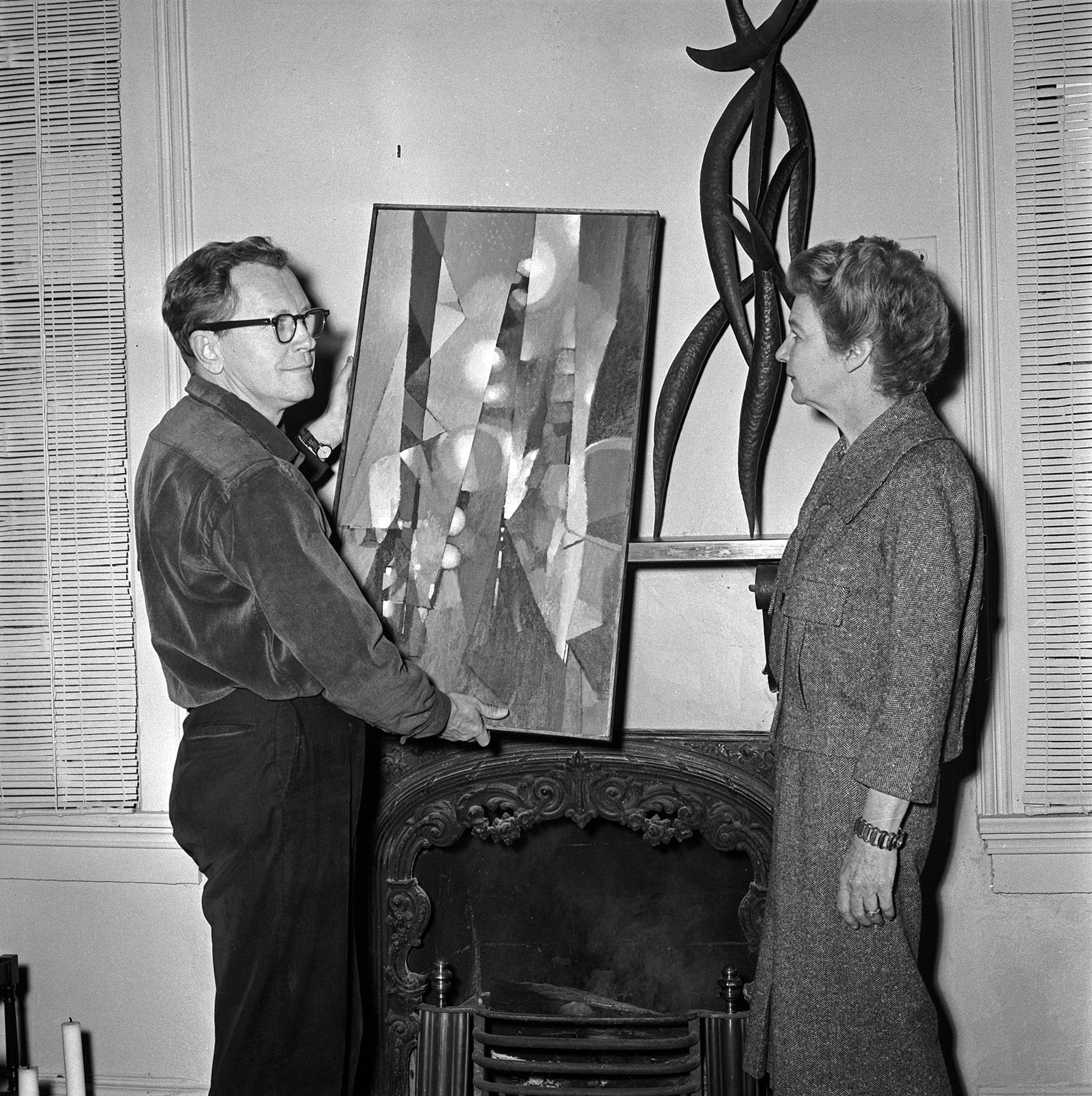
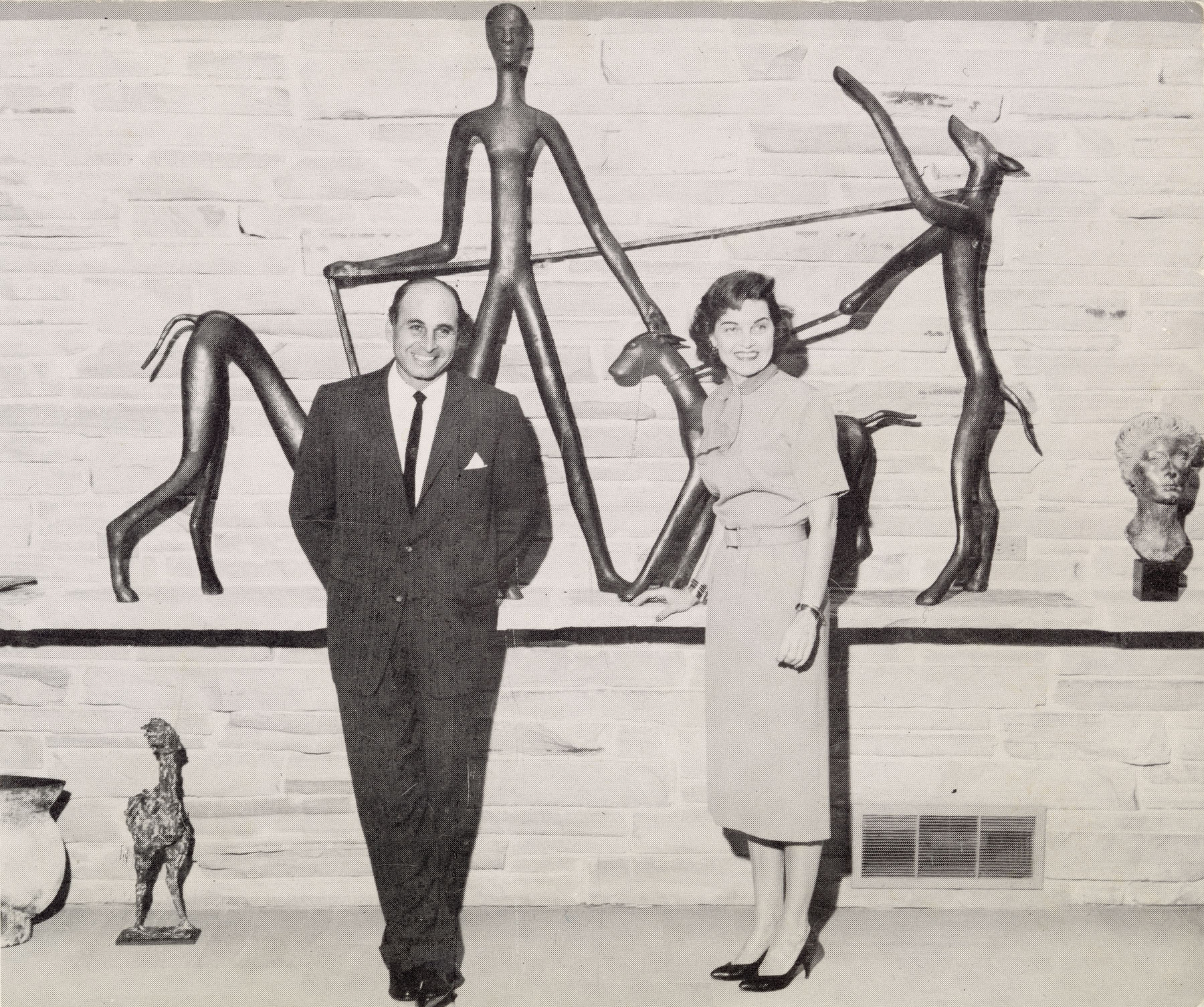
June 4–August 29, 1959
 The Williamses and Octavio and Consuelo Medellín (née Padilla) take a road trip to Mexico and Guatemala (fig. 5.18).126 Medellín lectures on the trip at the FWAA the following March.127
The Williamses and Octavio and Consuelo Medellín (née Padilla) take a road trip to Mexico and Guatemala (fig. 5.18).126 Medellín lectures on the trip at the FWAA the following March.127
By September 1959
 Oilman Julian Meeker commissions a Williams fountain, Arabian Fascination.128
Oilman Julian Meeker commissions a Williams fountain, Arabian Fascination.128
October 5–25, 1959
 The FWAC exhibits the Weiner’s sculpture collection (fig. 5.19). Three of Sellors’s works and two by Love are in the show, as are examples by Jacques Lipchitz, Henry Moore, and Pablo Picasso. Williams has eight works on view, more than any other artist.129
The FWAC exhibits the Weiner’s sculpture collection (fig. 5.19). Three of Sellors’s works and two by Love are in the show, as are examples by Jacques Lipchitz, Henry Moore, and Pablo Picasso. Williams has eight works on view, more than any other artist.129
April or May 1960
 Williams begins exhibiting with Valley House, regularly participating in its Spring Sculpture Shows.130
Williams begins exhibiting with Valley House, regularly participating in its Spring Sculpture Shows.130
March 23–April 4, 1960
 Williams has a solo show at the Nye Gallery in Dallas.131
Williams has a solo show at the Nye Gallery in Dallas.131
March 31–April 2, 1960
 Williams attends the first-ever National Bronze Casting Conference in Lawrence, Kansas. Logan and Owens also attend, and Williams meets Duayne Hatchett (1925, Shawnee, Oklahoma–2015, Buffalo), who becomes a regular visitor to Williams’s studio.132
Williams attends the first-ever National Bronze Casting Conference in Lawrence, Kansas. Logan and Owens also attend, and Williams meets Duayne Hatchett (1925, Shawnee, Oklahoma–2015, Buffalo), who becomes a regular visitor to Williams’s studio.132
May 22, 1960
 Williams judges the TCU student art exhibition.133
Williams judges the TCU student art exhibition.133
July 5, 1960
 The FWAA hosts a reception for its new director, Raymond T. Entenmann, who comes from PAFA. Caldwell resigned in March.134
The FWAA hosts a reception for its new director, Raymond T. Entenmann, who comes from PAFA. Caldwell resigned in March.134
August 28, 1960
 Cantey laments the FWAA budget situation: “It has not been possible since moving into the new building to acquire an example from the work of a local one-man show.”135
Cantey laments the FWAA budget situation: “It has not been possible since moving into the new building to acquire an example from the work of a local one-man show.”135
September 6–October 2, 1960
 The FWAC exhibits Fort Worth Collects, showing works borrowed from sixteen local collectors. Eleven lenders are board members, including the Canteys, Ruth Carter Johnson (later Stevenson) and her husband J. Lee Johnson III, John L. Paxton (brother of Frank Paxton Jr.) and his wife Mary Lou (née Gray), and the Weiners.136
The FWAC exhibits Fort Worth Collects, showing works borrowed from sixteen local collectors. Eleven lenders are board members, including the Canteys, Ruth Carter Johnson (later Stevenson) and her husband J. Lee Johnson III, John L. Paxton (brother of Frank Paxton Jr.) and his wife Mary Lou (née Gray), and the Weiners.136
Probably September 13, 1960
 Owens and Williams wave as Senators John F. Kennedy and Lyndon B. Johnson drive by Williams’s studio during a campaign tour.137
Owens and Williams wave as Senators John F. Kennedy and Lyndon B. Johnson drive by Williams’s studio during a campaign tour.137
November 27–December 31, 1960
 Williams and Trotter have a two-man show at Fifth Avenue Gallery.138
Williams and Trotter have a two-man show at Fifth Avenue Gallery.138
December 1, 1960
 A letter from Boynton to Williams refers to a “recent episode” and asks, “When do you get out of the hospital, Chas?” suggesting Williams has suffered another heart attack.139
A letter from Boynton to Williams refers to a “recent episode” and asks, “When do you get out of the hospital, Chas?” suggesting Williams has suffered another heart attack.139
January 24, 1961
 The Amon Carter Museum of Western Art (ACMWA, now the Amon Carter Museum of American Art) opens in a building designed by Philip Johnson. Jermayne MacAgy installs the first show and prepares the catalogue. Raymond Entenmann serves as acting administrator. Richard F. Brown of the Los Angeles County Museum of Art (LACMA) is an advisor.140 The Star-Telegram provides ten pages of coverage interspersed with articles such as “Horse, Poultry Entries Set Stock Show Record.”
The Amon Carter Museum of Western Art (ACMWA, now the Amon Carter Museum of American Art) opens in a building designed by Philip Johnson. Jermayne MacAgy installs the first show and prepares the catalogue. Raymond Entenmann serves as acting administrator. Richard F. Brown of the Los Angeles County Museum of Art (LACMA) is an advisor.140 The Star-Telegram provides ten pages of coverage interspersed with articles such as “Horse, Poultry Entries Set Stock Show Record.”
February 6–25, 1961
 The FWAC supplements a MoMA show on modern church architecture with sculptures by Medellín, Owens, and Williams.141 At an event during the show’s run, Williams and Owens demonstrate lost wax casting.142
The FWAC supplements a MoMA show on modern church architecture with sculptures by Medellín, Owens, and Williams.141 At an event during the show’s run, Williams and Owens demonstrate lost wax casting.142
April 23, 1961
 Fort Worth’s First National Bank opens a new building in downtown, with a plaza designed by Isamu Noguchi.143
Fort Worth’s First National Bank opens a new building in downtown, with a plaza designed by Isamu Noguchi.143
August 1, 1961
 Mitchell A. Wilder arrives from the Chouinard Art Institute in Los Angeles to assume the director’s post at the ACMWA.144
Mitchell A. Wilder arrives from the Chouinard Art Institute in Los Angeles to assume the director’s post at the ACMWA.144
August 13, 1961
 A letter signed by several artists asks the Star-Telegram for an art critic interested in art and not a “snobbish art society.” Soon after, two of the letter writers resign their positions at the FWAC, although the FWAC denies pressuring them to do so. Another letter accuses the center of being run not for the city’s public but its elite.145
A letter signed by several artists asks the Star-Telegram for an art critic interested in art and not a “snobbish art society.” Soon after, two of the letter writers resign their positions at the FWAC, although the FWAC denies pressuring them to do so. Another letter accuses the center of being run not for the city’s public but its elite.145
December 3, 1961
 To accommodate large-scale screen and fountain commissions for the Sheraton Hotel in Houston, Williams expands his studio.146
To accommodate large-scale screen and fountain commissions for the Sheraton Hotel in Houston, Williams expands his studio.146
January 10–February 11, 1962
 The Dallas Museum for Contemporary Arts (DMCA) hosts The Art of Assemblage, organized by MoMA. The DMCA’s director, Douglas MacAgy, adds sculptures by McManaway and Fridge to the show.147
The Dallas Museum for Contemporary Arts (DMCA) hosts The Art of Assemblage, organized by MoMA. The DMCA’s director, Douglas MacAgy, adds sculptures by McManaway and Fridge to the show.147
May 20–June 13, 1962
 Williams has a solo show at the New Arts Gallery in Houston.148
Williams has a solo show at the New Arts Gallery in Houston.148
May 23–June 10, 1962
 Three Texas Artists at the DMCA shows Williams with McManaway and abstract painter Dorothy Antoinette (Toni) LaSelle (1901, Beatrice, Nebraska–2002, Denton).149
Three Texas Artists at the DMCA shows Williams with McManaway and abstract painter Dorothy Antoinette (Toni) LaSelle (1901, Beatrice, Nebraska–2002, Denton).149
July 1962
 The second issue of a new publication, Artforum, reviews the Valley House Spring Sculpture exhibition, admiring Williams’s sculptures in particular.150 A note in the Star-Telegram scolds the magazine, which “has yet to discover Fort Worth exists.”151
The second issue of a new publication, Artforum, reviews the Valley House Spring Sculpture exhibition, admiring Williams’s sculptures in particular.150 A note in the Star-Telegram scolds the magazine, which “has yet to discover Fort Worth exists.”151
July 15–August 19, 1962
 The FWAC has a show of drawings by John Biggers (1924, Gastonia, North Carolina–2001, Houston).152 It is probably the first solo show of works by a Black man in the organization’s history.
The FWAC has a show of drawings by John Biggers (1924, Gastonia, North Carolina–2001, Houston).152 It is probably the first solo show of works by a Black man in the organization’s history.
September 9, 1962
 Fifth Avenue Gallery announces it will close, citing staffing issues.153
Fifth Avenue Gallery announces it will close, citing staffing issues.153
October 1962
 Williams wins the San Antonio Art League purchase prize of $1,200 at the Texas General for Ancient Warrior; the exhibition catalogue features the one-ton, ten-foot-tall sculpture on its cover (see fig. 4.20).154
Williams wins the San Antonio Art League purchase prize of $1,200 at the Texas General for Ancient Warrior; the exhibition catalogue features the one-ton, ten-foot-tall sculpture on its cover (see fig. 4.20).154
March 17, 1963
 Williams installs part of his Heritage of the Great Southwest series in the FWAC garden (see fig. 4.17). He says he was inspired by Maya and other Indigenous cultures’ use of stones.155
Williams installs part of his Heritage of the Great Southwest series in the FWAC garden (see fig. 4.17). He says he was inspired by Maya and other Indigenous cultures’ use of stones.155
April 7, 1963
 James J. Meeker, son of Williams’s patron Julian Meeker, becomes the Star-Telegram’s art critic.156 While supportive of local artists, he increases the paper’s focus on art on the coasts and in Europe.
James J. Meeker, son of Williams’s patron Julian Meeker, becomes the Star-Telegram’s art critic.156 While supportive of local artists, he increases the paper’s focus on art on the coasts and in Europe.
May 1963
 The DMCA merges with the DMFA.157
The DMCA merges with the DMFA.157
August 15–September 26, 1963
 Charles and Anita travel to Europe and Egypt. One of Williams’s Dallas patrons, Joe (J.O.) Lambert, finances the trip.158
Charles and Anita travel to Europe and Egypt. One of Williams’s Dallas patrons, Joe (J.O.) Lambert, finances the trip.158
October 11–27, 1963
 Williams has a solo show at the University of Oklahoma Museum of Art.159
Williams has a solo show at the University of Oklahoma Museum of Art.159
November 20, 1963
 Williams considers a trip to Yucatán with Floyd (Doc) Keen, a local veterinarian and stunt pilot. “Sure am looking forward to Palenque, El Tajin, Chichen Itza, Uxmal and Merida again.”160
Williams considers a trip to Yucatán with Floyd (Doc) Keen, a local veterinarian and stunt pilot. “Sure am looking forward to Palenque, El Tajin, Chichen Itza, Uxmal and Merida again.”160

November 21, 1963
 President John F. Kennedy and First Lady Jacqueline Kennedy spend the night in Fort Worth. Cantey, Ruth Carter Johnson, and Wilder decorate the suite at Hotel Texas with “a choice selection of works by great artists.” According to the Star-Telegram, no works by Texas artists were included because, “the Lone Star State has so many fine artists the practical limits of space precluded that”161 (fig. 5.20).
President John F. Kennedy and First Lady Jacqueline Kennedy spend the night in Fort Worth. Cantey, Ruth Carter Johnson, and Wilder decorate the suite at Hotel Texas with “a choice selection of works by great artists.” According to the Star-Telegram, no works by Texas artists were included because, “the Lone Star State has so many fine artists the practical limits of space precluded that”161 (fig. 5.20).
1964
 For the first time since the inaugural 1939 show, the Star-Telegram does not report on the winners of the Local.
For the first time since the inaugural 1939 show, the Star-Telegram does not report on the winners of the Local.
April 13, 1964
 Kay Kimbell dies, leaving his art collection and his fortune to the Kimbell Art Foundation to “further the arts.”162
Kay Kimbell dies, leaving his art collection and his fortune to the Kimbell Art Foundation to “further the arts.”162
May 12–31, 1964
 The FWAC shows works from Dallas collectors Mr. and Mrs. S. Allen Guiberson. Mrs. Guiberson is the former Betty McLean.163
The FWAC shows works from Dallas collectors Mr. and Mrs. S. Allen Guiberson. Mrs. Guiberson is the former Betty McLean.163
August 3–30, 1964
 Scott Gentling (1942, Rochester, Minnesota–2011), a former FWAC student now attending PAFA, has a solo show in the Members Lounge at the FWAC.164 Gentling later returns to Fort Worth and with his twin brother Stuart (1942, Rochester, Minnesota–2006) forms the nexus of a new generation of local artists.165
Scott Gentling (1942, Rochester, Minnesota–2011), a former FWAC student now attending PAFA, has a solo show in the Members Lounge at the FWAC.164 Gentling later returns to Fort Worth and with his twin brother Stuart (1942, Rochester, Minnesota–2006) forms the nexus of a new generation of local artists.165
October 1964
 After a flood damages Valley House, Cantey organizes a fundraiser.166
After a flood damages Valley House, Cantey organizes a fundraiser.166
January 17, 1965
 Gentling’s portrait of the regionalist painter Thomas Hart Benton appears in the Star-Telegram. Benton is in town visiting John Paxton and his family.167
Gentling’s portrait of the regionalist painter Thomas Hart Benton appears in the Star-Telegram. Benton is in town visiting John Paxton and his family.167
January 23–March [31], 1965
 Valley House hosts a major exhibition of Williams’s works.168
Valley House hosts a major exhibition of Williams’s works.168
April 1965
 John Paxton places a Williams sculpture on the cover of his company’s spring catalog.169
John Paxton places a Williams sculpture on the cover of his company’s spring catalog.169
May 2–23, 1965
 The Oklahoma Art Center organizes a two-man show of Williams’s sculptures and paintings by Gene Bavinger (1919, Sapulpa, Oklahoma–1997, Norman, Oklahoma).170 Williams makes landscape sculptures and interior decorations for the Bavingers’ house, designed by Bruce Goff.171
The Oklahoma Art Center organizes a two-man show of Williams’s sculptures and paintings by Gene Bavinger (1919, Sapulpa, Oklahoma–1997, Norman, Oklahoma).170 Williams makes landscape sculptures and interior decorations for the Bavingers’ house, designed by Bruce Goff.171
September 1965
 Williams contributes the catalogue introduction for an exhibition of the Weiner collection in Wichita. It travels to Oklahoma City in November.172
Williams contributes the catalogue introduction for an exhibition of the Weiner collection in Wichita. It travels to Oklahoma City in November.172
November 11–[28], 1965
 Valley House shows Scott Gentling’s work for the first time in a group exhibition, Contrasts: The Chosen Ones.173 The Vogels give Gentling a solo show the next March.
Valley House shows Scott Gentling’s work for the first time in a group exhibition, Contrasts: The Chosen Ones.173 The Vogels give Gentling a solo show the next March.
December 1, 1965
 Williams plans to fly to Mexico City with Keen and Love “to see the museum,” possibly referring to the National Museum of Anthropology, which opened a new modern building in September 1964.174
Williams plans to fly to Mexico City with Keen and Love “to see the museum,” possibly referring to the National Museum of Anthropology, which opened a new modern building in September 1964.174
March 30, 1966
 Williams dies of a heart attack.175 He is buried with Louise in Wichita.176
Williams dies of a heart attack.175 He is buried with Louise in Wichita.176
1967–72
 The ACMWA expands its mission to American art (1967).177
The ACMWA expands its mission to American art (1967).177
 Henry Hopkins, formerly of LACMA, becomes the FWAA director (1968) and organizes the US Pavilion at the Venice Biennale, sponsored by the FWAA and the Smithsonian (1970).178
Henry Hopkins, formerly of LACMA, becomes the FWAA director (1968) and organizes the US Pavilion at the Venice Biennale, sponsored by the FWAA and the Smithsonian (1970).178
 The Kimbell Art Museum, designed by Louis Kahn and directed by Richard F. Brown, opens (1972).179
The Kimbell Art Museum, designed by Louis Kahn and directed by Richard F. Brown, opens (1972).179
 The Star-Telegram Gallery Calendar covers a full column of text and lists nearly fifty galleries, Carlin, Collins, and Lon Hellums still among them.180
The Star-Telegram Gallery Calendar covers a full column of text and lists nearly fifty galleries, Carlin, Collins, and Lon Hellums still among them.180
 Weiner announces that he has been unable to donate his gardens to the city of Fort Worth, so most of the collection will go to Palm Springs (1971).181
Weiner announces that he has been unable to donate his gardens to the city of Fort Worth, so most of the collection will go to Palm Springs (1971).181
 Meeker, no longer the Star-Telegram’s art critic, becomes an “important collector,” loaning Ed Ruscha’s Standard Station to the FWAC (1972). Later that year, he hosts an exhibition of Scott and Stuart Gentling’s works as a fundraiser for the FWAC.182
Meeker, no longer the Star-Telegram’s art critic, becomes an “important collector,” loaning Ed Ruscha’s Standard Station to the FWAC (1972). Later that year, he hosts an exhibition of Scott and Stuart Gentling’s works as a fundraiser for the FWAC.182
 Douglas MacAgy comments on Williams, “As an artist, a man with swinging curiosity and surprise perceptions, as a generous friend and relaxing host, the late Charles Williams was a key figure in bringing [Texas contemporary artists] together” (1971).183
Douglas MacAgy comments on Williams, “As an artist, a man with swinging curiosity and surprise perceptions, as a generous friend and relaxing host, the late Charles Williams was a key figure in bringing [Texas contemporary artists] together” (1971).183
Notes
-
Reba Oglesby, “History of the Fort Worth Art Association” (Master’s Thesis, Texas State College for Women, 1950), 20–21. ↩︎
-
Artists’ birth and death dates appear in parentheses. All take place in Fort Worth unless otherwise specified. “Fort Worth Circle” designates a loosely defined group of friends and colleagues who worked in a variety of mediums and styles. Many more artists than those listed here were involved in the group. For more on the Fort Worth Circle, see Intimate Modernism: Fort Worth Circle Artists in the 1940s (exhibition catalogue), ed. Jane Myers (Fort Worth: Amon Carter Museum, 2008). ↩︎
-
Standard Certificate of Birth, Charles Truett Williams, March 28, 1918 (Austin: Texas Department of State Health Services microfiche); and US Census Bureau, “1920 Census;” both at Ancestry.com. Some sources erroneously indicate Williams was born in Mineral Wells. ↩︎
-
Pauline Naylor, “Public School Art Work to Be Shown,” Fort Worth Star-Telegram, February 24, 1929, 7. ↩︎
-
Scott Grant Barker, “An Unconventional Vision: Remembering the Fort Worth Circle,” in Intimate Modernism: Fort Worth Circle Artists in the 1940s (exhibition catalogue), ed. Jane Myers (Fort Worth: Amon Carter Museum, 2008), 13; Scott Grant Barker, “Evaline Sellors Oral History Transcript (unpublished manuscript),” 2002, 20, Amon Carter Museum of American Art Oral History Archives. ↩︎
-
“Old Masters to Be Here on Thursday for Twelve-Day Exhibition,” Fort Worth Star-Telegram, March 12, 1935, 11; “Beechey Painting Bought by Kimbell” (photo), Fort Worth Star-Telegram, April 2, 1935, 5. ↩︎
-
“Rogers Wanted Remington Work,” Fort Worth Star-Telegram, January 22, 1961, 43. ↩︎
-
“Application for Federal Employment,” June 7, 1948, 3, in Army Corps of Engineers Records [1] folder; and “Record or Request for Approval of Promotion and/or Reassignment,” June 28, 1943, in Army Corps of Engineers Records [3] folder; both Charles Truett Williams Papers, Amon Carter Museum of American Art (hereinafter, “ACMAA Williams Papers”). ↩︎
-
Scott Grant Barker, “Karl Williams Oral History Transcript” (unpublished manuscript), 2021, 2, Amon Carter Museum of American Art Oral History Archives. ↩︎
-
“Request for Promotion,” 2. ↩︎
-
“Request for Promotion,” 2. Some sources say Williams attended Abilene Christian University. A Charles H. Williams appears in the 1940 and 1941 Abilene Christian yearbooks, but he is from San Antonio and bears little resemblance to Charles T. Williams. ↩︎
-
Ida Belle Hicks, “Art Prize Winner Is Announced,” Fort Worth Star-Telegram, June 4, 1939, 20; Oglesby, “History of the FWAA,” 107. Reeder’s paintings take first in 1941, 1943, and his print in 1952; Utter’s paintings in 1942, 1946, 1949, and 1953 and his drawings in 1948, 1950, and 1953; Bomar’s paintings in 1944 and 1948; Fearing’s in 1945; Helfensteller’s print in 1946 and her drawings in 1947 and 1949; McVeigh’s prints in 1947, 1948, and 1950; and Brants’ paintings in 1950, 1952, and 1956. Evaline Sellors takes firsts in sculpture in 1941, 1947, 1950, and 1952. The group also wins numerous seconds, thirds, and honorable mentions. The name of the exhibition changed frequently. The first year it was called the Fort Worth Artists Exhibition. It was subsequently known as the Annual Local Exhibition of Painting and Sculpture, Artists of Fort Worth, the Annual Exhibition of Painting and Sculpture by Artists of Tarrant County, the Annual Tarrant County Show, the Annual Exhibition for Artists of Fort Worth and Tarrant County, the Tarrant County Annual, and other variations. There was no local show in 1959, 1972, or 1974. From 1975–77, it was the Southwest/Tarrant County Annual. This and other exhibition and award histories have been reconstructed from exhibition histories in the Modern Art Museum of Fort Worth Archives, exhibition catalogues, and Fort Worth Star-Telegram coverage of the show. ↩︎
-
Scott Grant Barker, “Promises Made and Kept,” in First Light: Local Art and the Fort Worth Public Library 1901–1961 (exhibition catalogue) (Fort Worth: Fort Worth Public Library, 2001), v. ↩︎
-
Leon Wilson, “The History of the TCU Art Department Through 1969” (MFA Thesis, Texas Christian University, 1970), 115–16, TCU Art History Department Archives. ↩︎
-
The [First] Texas General Exhibition (exhibition catalogue) (Dallas Museum of Fine Arts, 1940), texashistory.unt.edu. The Texas General, later called the Texas Painting and Sculpture Exhibition, continued annually through 1964 and sporadically until 1976. It was sponsored by the Dallas Museum of Fine Arts (now the Dallas Museum of Art), Museum of Fine Arts Houston, and the Witte Memorial Museum of San Antonio (now the Witte Museum). The 1942 exhibition catalogue states that the exhibition is in its fourth year, implying it began in 1938; but the 1940 catalogue calls it a “new venture.” ↩︎
-
Barker, “An Unconventional Vision,” 40–42. ↩︎
-
Scott Grant Barker, “The Serendipity of Second Chances: Modern Art Appears in Fort Worth and Then Returns,” Langdon Review of the Arts in Texas 6 (2009–10): 156. ↩︎
-
“Louise Beaver and Charles Williams, H-SU Students, Wed,” Abilene Reporter News, March 2, 1941, 22. ↩︎
-
“Request for Promotion.” ↩︎
-
[Charles T. Williams] to Karl [Williams], November 20, 1963, in Correspondence - General [2] folder, ACMAA Williams Papers. ↩︎
-
“West Texas Art Show Opened as Climax to Meeting of Fort Worth Association,” Fort Worth Star-Telegram, March 4, 1942, 2. ↩︎
-
Barker, “An Unconventional Vision,” 26; Nedra Jenkins, “Cantey Art Collection to Be Shown in Denton,” Fort Worth Star-Telegram, February 10, 1952, 50. ↩︎
-
“Sam Cantey III Dies at Age 59 in Mexico” (obituary), Fort Worth Star-Telegram, November 5, 1973, 2. ↩︎
-
Katie Robinson Edwards, Midcentury Modern Art in Texas (Austin: University of Texas, 2014), 123. ↩︎
-
Ida Belle Hicks, “Work of Blanche McVeigh to Be Shown by Art Association in One-Man Exhibit,” Fort Worth Star-Telegram, May 2, 1943, 32. Some sources date the McVeigh show to 1942. Helfensteller has the honor in 1944, Reeder in 1945, Utter in 1946, Bomar in 1947, and Sellors in 1948. ↩︎
-
“Application for Federal Employment,” 2–3. If these documents are accurate, Williams was in Virginia on June 6, 1944, and did not land at Omaha Beach on D-Day as mentioned in Karl Williams’s oral history. A request for Williams’s military records from the National Archives remains pending at the time of publication. ↩︎
-
Edward Alden Jewell, “Art Plans of Local Museums,” New York Times, September 24, 1944, X4. ↩︎
-
“Application for Federal Employment”; “Separation Qualification Record,” n.d., in Army Corps of Engineers Records [2] folder, ACMAA Williams Papers; Charles T. Williams, “Agenda,” 1946, June 16–29, uncatalogued notebook in ACMAA Williams Papers. ↩︎
-
“Two from Here Graduated at Sarah Lawrence College,” Fort Worth Star-Telegram, April 27, 1945, 23. ↩︎
-
“In New Post” (photo caption), Fort Worth Star-Telegram, June 24, 1945, 16; Barker, “Sellors Oral History,” 32–34; Barker, “The Serendipity of Second Chances,” 157. ↩︎
-
“Progress, School, Pension Bonds Are Voted by Landslide Majority,” Fort Worth Star-Telegram, October 3, 1945, 1. ↩︎
-
R.S. Walsh Jr., Chief, Personnel Branch, to Charles T. Williams, August 7, 1947, in Army Corps of Engineers Records [3] folder, ACMAA Williams Papers. ↩︎
-
“Louise B. Williams,” Georgia, US, Death Index, 1919–1998, Ancestry.com; Karl Williams, conversation with the author, April 6, 2022. ↩︎
-
Barker, “Karl Williams Oral History,” 3; Edward E. Anton, “War Department Notification of Personnel Action,” October 1, 1947, in Army Corps of Engineers Records [1] folder, ACMAA Williams Papers. ↩︎
-
Wilson, “History of TCU Art Department,” 127–28. ↩︎
-
Robinson Edwards, Midcentury Modern Art in Texas, 270. ↩︎
-
Anton, “War Department Notification of Personnel Action.” ↩︎
-
Karl Williams, conversation with author, April 6, 2022. ↩︎
-
Robinson Edwards, Midcentury Modern Art in Texas, 129; Donald S. Vogel, Memories and Images: The World of Donald Vogel and Valley House Gallery (Denton, TX: University of North Texas Press, 2000), 124. ↩︎
-
Williams arrived in Fort Worth too late for the 1947 fall semester, and the Star-Telegram lists him among the TCU students in a show in summer 1948. ↩︎
-
Eleanor Kempner Freed, “Art: Requiem for a Sculptor,” Houston Post, April 10, 1966, clipping in microfilm reel 1803, Charles T. Williams Papers, 1949–1966, Archives of American Art, Smithsonian Institution (hereinafter, “AAA Williams Papers”). ↩︎
-
See correspondence in microfilm reel 1800, AAA Williams Papers. ↩︎
-
Katie Robinson Edwards, “Jack Boynton Oral History Transcript” (unpublished manuscript), 2007, 4. ↩︎
-
“R.F. Windfohr Is Elected Art Association President,” Fort Worth Star-Telegram, March 20, 1948, 3; “R.F. Windfohr Ex-Oil Official, Producer, Dies,” Fort Worth Star-Telegram, October 21, 1964, 1, 4. ↩︎
-
Sam Cantey III, “Fort Worth,” in Texas Painting & Sculpture: The 20th Century (exhibition catalogue) (Dallas, San Antonio, Austin, Fort Worth, and Lubbock: Pollock Galleries, San Antonio Museum Association, University Art Museum, Amon Carter Museum, The Museum, 1971), 21. ↩︎
-
Nedra Jenkins, “GI Student Art Exhibit on Display at Library,” Fort Worth Star-Telegram, June 6, 1948, 20. ↩︎
-
Wilson, “History of TCU Art Department,” 157. ↩︎
-
“Six Known Dead, Thousands Homeless; Flood One of Worst in Fort Worth’s History,” Fort Worth Star-Telegram, May 18, 1949, 1. ↩︎
-
Barker, “Karl Williams Oral History,” 7. ↩︎
-
Eleventh Annual Texas Exhibition of Painting and Sculpture (exhibition catalogue) (Dallas, Houston, and San Antonio: Dallas Museum of Fine Arts, Museum of Fine Arts Houston, Witte Memorial Museum, 1949–50), texashistory.unt.edu; Twelfth Annual Exhibition of Texas Painting and Sculpture (exhibition catalogue) (Dallas, Houston, and San Antonio: Dallas Museum of Fine Arts, Museum of Fine Arts Houston, Witte Memorial Museum, 1950–51), texashistory.unt.edu; Nedra Jenkins, “Notes on Art, Artists and Art Circles,” Fort Worth Star-Telegram, November 5, 1950, 46. ↩︎
-
Wilson, “History of TCU Art Department,” 136, 157; “Statue in Progress…” (photo caption), The Skiff, October 3, 1952, 3, repository.tcu.edu; “Leonard Marion Logan,” US Social Security Applications and Claims Index, 1936–2007, Ancestry.com. ↩︎
-
Mark Andrew White, Macrocosm/Microcosm: Abstract Expressionism in the American Southwest (exhibition catalogue) (Norman, OK: Fred Jones Jr. Museum of Art, The University of Oklahoma, 2014), 26–27; Charles T. Williams, “Sculpture Log 1952–1964,” n.d., 7, ledger in ACMAA Williams Papers. ↩︎
-
Local Artists Show (exhibition catalogue) (Fort Worth: Fort Worth Art Association, 1949); Local Show (exhibition catalogue) (Fort Worth: Fort Worth Art Association, 1950). ↩︎
-
“Lon Hellums Gallery Announcement,” April 10, 1950, in microfilm reel 1800, AAA Williams Papers. ↩︎
-
Nedra Jenkins, “Fort Worth Art Circles,” Fort Worth Star-Telegram, October 19, 1947, 37. ↩︎
-
Nedra Jenkins, “Library Gallery Is Too Hot for Summer Shows,” Fort Worth Star-Telegram, June 18, 1950, 62. ↩︎
-
“Pierce Drawings on View; Museum Summer Shows,” The Daily Times Herald, Dallas, July 2, 1950, clipping in microfilm reel 1800, AAA Williams Papers. ↩︎
-
Nedra Jenkins, “TCU’s Art Department Looks to Busy Season,” Fort Worth Star-Telegram, October 15, 1950, 54; Nedra Jenkins, “Art Departments Have Gains in Registration,” Fort Worth Star-Telegram, September 20, 1953, 48; Nedra Jenkins, “Art-Minded Students Enter College Circles,” Fort Worth Star-Telegram, September 22, 1957, 40. ↩︎
-
Mark A. Castro, Octavio Medellín: Spirit and Form (exhibition catalogue) (Dallas: Dallas Museum of Art, 2022), 13, 57–58; Nedra Jenkins, “Notes on Art, Art Circles,” Fort Worth Star-Telegram, November 19, 1950, 58. ↩︎
-
Nedra Jenkins, “Cynthia Brants Will Be Presented in One-Man Show by Art Association,” Fort Worth Star-Telegram, November 26, 1950, 16. ↩︎
-
There was no show in 1951. ↩︎
-
Charles T. Williams to The Division Engineer, January 22, 1951, in Veteran’s Administration Records folder, ACMAA Williams Papers; Edward E. Anton, Chief, Personnel Branch to Chief, Engineering Div. and Charles T. Williams, January 25, 1951, in Veteran’s Administration Records folder, ACMAA Williams Papers. ↩︎
-
Nedra Jenkins, “Interest Continues in Local Artists’ Show,” Fort Worth Star-Telegram, March 25, 1951, 16. ↩︎
-
“Art Circles and Notes,” Fort Worth Star-Telegram, April 15, 1951, 48; Vogel, Memories and Images, 65. ↩︎
-
Nedra Jenkins, “Notes on Art and Artists,” Fort Worth Star-Telegram, December 23, 1951, 18. ↩︎
-
Nedra Jenkins, “Art Notes,” Fort Worth Star-Telegram, May 27, 1951, 30. ↩︎
-
Nedra Jenkins, “Ohioan Introduced Here as Future Museum Head,” Fort Worth Star-Telegram, June 13, 1951, 1. ↩︎
-
Nedra Jenkins, “Art Association Will Present ‘Wildcat’ Show,” Fort Worth Star-Telegram, August 26, 1951, 44; Nedra Jenkins, “Home Furnishings Store Becomes Art Gallery, Too,” Fort Worth Star-Telegram, November 4, 1951, 34; Nedra Jenkins, “25 of Rufino Tamayo’s Paintings to Be Shown,” Fort Worth Star-Telegram, January 6, 1952, 38. ↩︎
-
“Marriage License, Chas. T. Williams and Anita S. McConnell,” August 31, 1951, in Legal and Financial Records folder, ACMAA Williams Papers; “Anita McConnell Williams” (obituary), Fort Worth Star-Telegram, February 10, 2013, Z14. ↩︎
-
Nedra Jenkins, “Art Notes,” Fort Worth Star-Telegram, November 18, 1951, 46; Nedra Jenkins, “Artists Integral Part of Group’s Program,” Fort Worth Star-Telegram, March 9, 1952, 41. ↩︎
-
“10 Artists Here Have Works Accepted for Houston Show,” Fort Worth Star-Telegram, October 21, 1951, 57. ↩︎
-
Nedra Jenkins, “Notes on Art, Art Circles,” Fort Worth Star-Telegram, November 11, 1951, 52. ↩︎
-
Karl Williams, conversation with the author, April 6, 2022. ↩︎
-
Charles T. Williams to Sidney Berkowitz, Neiman Marcus (carbon copy), January 28, 1952, in microfilm reel 1800, AAA Williams Papers. ↩︎
-
Nedra Jenkins, “Two Entries Tie for First in Fort Worth Art Show,” Fort Worth Star-Telegram, March 2, 1952, 54. ↩︎
-
Nedra Jenkins, “Texas Artists to Draw Spotlights in New York,” Fort Worth Star-Telegram, June 15, 1952, 30. ↩︎
-
Nedra Jenkins, “Notes on Art, Artists and Art Circles,” Fort Worth Star-Telegram, October 19, 1952, 56. ↩︎
-
Texas Christian University, Commencement Program, August 26, 1955, 5, repository.tcu.edu. ↩︎
-
Nedra Jenkins, “Painters of Texas and Southwest Will Be Stressed in Art Exhibits,” Fort Worth Star-Telegram, July 6, 1952, 48; Nedra Jenkins, “6th Graders to Share in Art Appreciation,” Fort Worth Star-Telegram, September 28, 1952, 32. ↩︎
-
Nedra Jenkins, “Some Feelings Hurt, but Tarrant Art Show Good,” Fort Worth Star-Telegram, May 3, 1953, 54. ↩︎
-
Williams wins second for sculpture in 1952 (Sellors takes first) and another first in 1954. He wins small prizes in 1956, 1958, and 1962. In painting, Erickson places first in 1951 and 1955, Boynton in 1952 and 1954, and Trotter in 1953. ↩︎
-
Nedra Jenkins, “Notes on Artists and the Art World,” Fort Worth Star-Telegram, December 6, 1953, 66. ↩︎
-
Robinson Edwards, Midcentury Modern Art in Texas, 211. ↩︎
-
Weiner Sculpture Collection (exhibition catalogue) (Oklahoma City: Oklahoma Art Center, 1965); Janet Tyson, “The Spark,” Fort Worth Star-Telegram, [1998], 2, clipping in Williams, Charles folder, ACMAA Artist Files; Charles T. Williams, “The Design and Execution of a Fountain Sculpture” (MFA Thesis, Texas Christian University, 1955). ↩︎
-
Williams, “Sculpture Log 1952–1964,” 18–21. ↩︎
-
Dallas Museum of Fine Arts, Some Sculptors of the Region (unpublished exhibition checklist), 1954, dma.org; Nedra Jenkins, “Notes on Artists and the Art World,” Fort Worth Star-Telegram, May 2, 1954, 26. ↩︎
-
Nedra Jenkins, “Fort Worth Sculptor Top Winner at New Orleans,” Fort Worth Star-Telegram, March 28, 1954, 50; Nedra Jenkins, “Fort Worth Art Works Travel in Top Company,” Fort Worth Star-Telegram, June 20, 1954, 29; 16th Annual Local Artists Show (exhibition catalogue) (Fort Worth: Fort Worth Art Association, 1954). ↩︎
-
Younger American Painters (exhibition catalogue) (New York: Solomon R. Guggenheim Museum, 1954), www.archive.org. ↩︎
-
White, Macrocosm/Microcosm, 13. ↩︎
-
Nedra Jenkins, “Art Center Opening Marks Advance in Prestige, Good Will for Fort Worth,” Fort Worth Star-Telegram, October 10, 1954, 70. ↩︎
-
Jenkins, 70. The Fort Worth Art Center became the Fort Worth Art Center Museum, then the Fort Worth Art Museum, and is now the Modern Art Museum of Fort Worth. It moved to a new building in 2002. The Bayer building now houses Arts Fort Worth. ↩︎
-
“Art Graduate” (photo caption), Fort Worth Star-Telegram, February 27, 1955, 55. ↩︎
-
Robinson Edwards, Midcentury Modern Art in Texas, 231. ↩︎
-
[Charles T. Williams], [Gene Owens building a burnout kiln], October 1955, black-and-white photographs in Sculptures in Process [1] folder, ACMAA Williams Papers. ↩︎
-
Nedra Jenkins, “Notes on Art and Artists,” Fort Worth Star-Telegram, April 17, 1955, 50. ↩︎
-
Barker, “Sellors Oral History,” 35. ↩︎
-
Nedra Jenkins, “Notes on Art and Artists,” Fort Worth Star-Telegram, April 24, 1955, 50; Donald Vogel, Donald S. Vogel (exhibition catalogue) (Dallas: Valley House Gallery, 1969). ↩︎
-
Texas Christian University, Commencement Program, 1955, 8, repository.tcu.edu. ↩︎
-
Nedra Jenkins, “Notes on Art, Artists and Art Circles,” Fort Worth Star-Telegram, September 18, 1955, 34. ↩︎
-
“Carter Estate Left for Public’s Benefit,” Fort Worth Star-Telegram, July 1, 1955, 1. ↩︎
-
Calvin A. Cumbie, TCU Registrar, to Charles Williams, August 1, 1955, in microfilm reel 1800, AAA Williams Papers; Texas Christian University, Commencement Program, 1955, 4; W.J., “Notes on Art and Artists,” Fort Worth Star-Telegram, June 19, 1955, 36. ↩︎
-
Karl Williams, conversations with the author, February 11, 2022 and April 6, 2022; Nedra Jenkins, “Sculptor Makes Return to Wood from Metal,” Fort Worth Star-Telegram, November 8, 1957, clipping in microfilm reel 1801, AAA Williams Papers; Williams, “Sculpture Log 1952–1964,” 21; Charles T. Williams to Charlie, September 17, 1955, in microfilm reel 1800, AAA Williams Papers. ↩︎
-
Nedra Jenkins, “Art Center’s Program Has Several Highlights,” Fort Worth Star-Telegram, September 11, 1955, 61. ↩︎
-
Charles T. Williams, “American Institute of Architects (AIA) Lecture” (unpublished manuscript), October 24, 1955, in Manuscripts folder, ACMAA Williams Papers. ↩︎
-
Nedra Jenkins, “Notes on Art and Artists,” Fort Worth Star-Telegram, February 24, 1957, 44; Nedra Jenkins, “Men of Art Guilds Are to Hold a Convention,” Fort Worth Star-Telegram, September 8, 1957, 56. ↩︎
-
Nedra Jenkins, “Insomniac’s Dream Crystallized in Gulf-Caribbean Art Exhibition,” Fort Worth Star-Telegram, April 8, 1956, 64. ↩︎
-
Sculptors of Texas (exhibition catalogue) (Fort Worth: Fort Worth Art Association, 1957). ↩︎
-
Robinson Edwards, Midcentury Modern Art in Texas, 213. ↩︎
-
Douglas MacAgy, one i at a time (exhibition catalogue) (Dallas: Pollock Galleries, Meadows School of the Arts, Southern Methodist University, 1971), 9. ↩︎
-
“Turnout for Art in Texas,” LIFE, April 29, 1957, 168. ↩︎
-
Rual Askew, “Splendid Vision Realized,” Dallas Morning News, May 3, 1957, clipping in microfilm reel 1801, AAA Williams Papers; Nedra Jenkins, “Notes on Art and Artists,” Fort Worth Star-Telegram, May 19, 1957, 54. ↩︎
-
Don Williams, “Turnpike Is Opened,” Fort Worth Star-Telegram, August 27, 1957, 1. ↩︎
-
Owen Day, “Turnpike to Feature ‘Two Cities’ Mosaic,” Fort Worth Press, August 25, 1957, 10B, clipping in microfilm reel 1801, AAA Williams Papers; Williams, “Sculpture Log 1952–1964,” 29. ↩︎
-
The Sculpture of Charles Williams (exhibition catalogue) (Fort Worth: Fort Worth Art Association, 1957). ↩︎
-
“Bill of Sale to Stanley Marcus,” January 5, 1958, in microfilm reel 1801, AAA Williams Papers. ↩︎
-
Victor J. Hammer to Charles Williams, January 16, 1958, in microfilm reel 1801, AAA Williams Papers. Williams never did anything with the jade, although given his interest in Mesoamerican cultures, it must have tantalized him (Karl Williams, conversation with the author, April 6, 2022). ↩︎
-
Victor J. Hammer to Charles Williams, February 19, 1958, in microfilm reel 1801, AAA Williams Papers. ↩︎
-
Lloyd Stewart, “Three Phases of Artist Will Be Exhibited Here,” Fort Worth Star-Telegram, June 5, 1960, 37. ↩︎
-
“TWC Graduate to Return, Head School Art Department,” Fort Worth Star-Telegram, August 10, 1958, 32. ↩︎
-
Katie Robinson Edwards, “Gene Owens Oral History Transcript” (unpublished manuscript), 2008, 5. ↩︎
-
“Exhibits and Artists,” Houston Post, November 23, 1958, clipping in microfilm reel 1801, AAA Williams Papers. ↩︎
-
“Totems Not Taboo: An Exhibition of Primitive Art,” Contemporary Arts Museum Houston, accessed April 3, 2022, camh.org; Robinson Edwards, Midcentury Modern Art in Texas, 215. ↩︎
-
Lloyd Stewart, “Two Art Galleries Set Formal Openings Today,” Fort Worth Star-Telegram, March 1, 1959, 54; Lloyd Stewart, “Wonderful Things Gallery Will Open at New Location,” Fort Worth Star-Telegram, September 20, 1959, 52; “Gallery Calendar,” Fort Worth Star-Telegram, April 10, 1960; “Ellison Gallery Exhibit Outstanding,” Fort Worth Star-Telegram, April 19, 1959, 57. ↩︎
-
“Gallery Calendar,” Fort Worth Star-Telegram, March 15, 1959, 38. ↩︎
-
This history has been reconstructed from Fort Worth Star-Telegram art pages. ↩︎
-
Barker, “Karl Williams Oral History,” 12; Williams, “Sculpture Log 1952–1964,” 54. ↩︎
-
Lloyd Stewart, “Notes on Art and Artists,” Fort Worth Star-Telegram, February 28, 1960, 68. ↩︎
-
Williams, “Sculpture Log 1952–1964,” 55. ↩︎
-
The Sculpture Collection of Mr. and Mrs. Ted Weiner (exhibition catalogue) (Fort Worth: Fort Worth Art Association, 1959). ↩︎
-
Peggy [Vogel] To Charlie [Charles T. Williams], April 26, 1960, in microfilm reel 1801, AAA Williams Papers. ↩︎
-
“In Nye Sculpture Show” (photo caption), Dallas Morning News, March 23, 1960, clipping in microfilm reel 1801, AAA Williams Papers. ↩︎
-
“‘Tentative Program’ National Bronze Casting Conference,” n.d., in microfilm reel 1801, AAA Williams Papers; “Roster - Page 2. Bronze Casting Conference,” n.d., in microfilm reel 1801, AAA Williams Papers; “Sculptors Meet in New Orleans,” New York Times, April 4, 1976. ↩︎
-
Lloyd Stewart, “Notes on Art and Artists,” Fort Worth Star-Telegram, May 22, 1960, 59. ↩︎
-
“Art Association Group Will Meet New Director,” Fort Worth Star-Telegram, July 5, 1960, 15; Lloyd Stewart, “Fort Worth’s Art Scene Faces a Busy Week,” Fort Worth Star-Telegram, March 6, 1960, 47. ↩︎
-
Lloyd Stewart, “Art Association Purchases Slowed by Lack of Funds,” Fort Worth Star-Telegram, August 28, 1960, 63. ↩︎
-
Fort Worth Collects (exhibition catalogue) (Fort Worth: Fort Worth Art Association, 1960). ↩︎
-
Robinson Edwards, “Owens Oral History,” 73; “Dallas, Texas, 13 September 1960,” JFK Library, accessed April 18, 2022, www.jfklibrary.org. ↩︎
-
Lloyd Stewart, “Painter, Sculptor Join in Show,” Fort Worth Star-Telegram, November 27, 1960, 38. ↩︎
-
Jack [Boynton] to Charlie and Anita [Williams], December 1, 1960, in microfilm reel 1801, AAA Williams Papers. ↩︎
-
“First Catalog like Book at Western Art Museum,” Fort Worth Star-Telegram, January 22, 1961, 45; Lloyd Stewart, “Amon Carter Museum Draws Foreign Visitors,” Fort Worth Star-Telegram, March 19, 1961, 35; Lloyd Stewart, “Western Art Museum Ready to Open,” Fort Worth Star-Telegram, January 22, 1961, 1. ↩︎
-
Lloyd Stewart, “Today Last Chance to See Lea Show,” Fort Worth Star-Telegram, February 5, 1961, 29. ↩︎
-
Lloyd Stewart, “Notes on Art and Artists,” Fort Worth Star-Telegram, February 19, 1961, 29. ↩︎
-
“Noted Sculptor Designed Bank Plaza,” Fort Worth Star-Telegram, April 23, 1961, 62. ↩︎
-
Lloyd Stewart, “Two Leaders Join Art Community,” Fort Worth Star-Telegram, August 6, 1961, 50. ↩︎
-
“Resigned Art Center Teacher Speaks,” Fort Worth Star-Telegram, August 20, 1961, 62; “Art Center Chief Denies ‘Censorship,’” August 1961, clipping in microfilm reel 1802, AAA Williams Papers. ↩︎
-
Lloyd Stewart, “Sculptor Molds Studio to Work,” Fort Worth Star-Telegram, December 3, 1961, 40. ↩︎
-
“Museum Director for Dallas Has Impressive Background,” Fort Worth Star-Telegram, August 23, 1959, 50; Dallas Museum for Contemporary Arts, The Art of Assemblage (unpublished exhibition checklist), 1962, texashistory.unt.edu. Douglas was Jermayne MacAgy’s ex-husband. ↩︎
-
Lloyd Stewart, “Notes on Art and Artists,” Fort Worth Star-Telegram, May 20, 1962, 46. ↩︎
-
“What’s Going On,” Dallas Morning News, June 2, 1962, 10. ↩︎
-
Rual Askew, “Reviews - Dallas,” Artforum 1, no. 2 (July 1962): 44. ↩︎
-
Lloyd Stewart, “Notes on Art and Artists,” Fort Worth Star-Telegram, August 12, 1962, 34. ↩︎
-
Lloyd Stewart, “Busy Day Due at Art Center,” Fort Worth Star-Telegram, July 15, 1962, 30. ↩︎
-
Lloyd Stewart, “Notes on Art and Artists,” Fort Worth Star-Telegram, September 9, 1962, 36. ↩︎
-
24th Annual Texas Painting and Sculpture Exhibition, 1962–1963 (exhibition catalogue) (Dallas, Houston, and San Antonio: Dallas Museum of Fine Arts, Museum of Fine Arts Houston, Witte Memorial Museum, 1962), texashistory.unt.edu. ↩︎
-
“Rough Materials Used in Heritage Sculptures,” Fort Worth Star-Telegram, March 17, 1963, 47. ↩︎
-
James J. Meeker, “Taos Art Impressive in Variety of Style,” Fort Worth Star-Telegram, April 7, 1963, 60. ↩︎
-
“Museum History,” Dallas Museum of Art, accessed April 4, 2022, dma.org. ↩︎
-
Williams, “Sculpture Log 1952–1964,” 114; Barker, “Karl Williams Oral History,” 12. ↩︎
-
“A Work of Art” (photo caption), [The Oklahoma Daily], October 1, 1963, clipping in microfilm reel 1802, AAA Williams Papers. ↩︎
-
[Charles T. Williams] to Karl [Williams], November 20, 1963. ↩︎
-
“Presidential Suite Placed Under Strict Secret Service Vigilance,” Fort Worth Star-Telegram, November 21, 1963, 6. ↩︎
-
“Kay Kimbell, 77, Food Multimillionaire, Dies,” Fort Worth Star-Telegram, April 13, 1964, 1; “Arts Aided by Kimbell Will,” Fort Worth Star-Telegram, April 16, 1964, 1. ↩︎
-
James J. Meeker, “Collectors’ Art to Be Exhibited,” Fort Worth Star-Telegram, May 10, 1964, 36. ↩︎
-
“Gifted Young Painter Pursues Unique Vision of Neo-Realism,” Fort Worth Star-Telegram, August 2, 1964, 38. ↩︎
-
For more on the Gentlings, see Imagined Realism: Scott and Stuart Gentling (Fort Worth: Amon Carter Museum of American Art, 2021). ↩︎
-
Sam Cantey III to Anita and Charles [Williams], ca. 1964, in microfilm reel 1802, AAA Williams Papers; John Neville, “From Ideograph to Abstraction,” Dallas Morning News, October 2, 1964, 17. ↩︎
-
“Rare Portrait” (photo caption), Fort Worth Star-Telegram, January 17, 1965, 24. ↩︎
-
John Neville, “Valley House Sets Major Williams Show,” Dallas Morning News, January 21, 1965, 23. ↩︎
-
John L. Paxton, Executive Vice President, Frank Paxton Lumber Company, to Charles Williams, April 27, 1965, in microfilm reel 1803, AAA Williams Papers. ↩︎
-
Gene Bavinger Paintings, Charles T. Williams Sculpture (exhibition catalogue) (Oklahoma City: Oklahoma Art Center, 1965). ↩︎
-
Charles T. Williams, “Sculpture Log 1965–1966,” 8, ledger in ACMAA Williams Papers. ↩︎
-
Weiner Sculpture Collection; Patric Shannon, Director, Oklahoma Art Center, to Charles T. Williams, September 22, 1965, in microfilm reel 1803, AAA Williams Papers. ↩︎
-
John Neville, “Dozier Taking New Directions,” Dallas Morning News, November 11, 1965, 21. ↩︎
-
Anita & Charles [Williams] to Karl & Becky [Williams], December 1, 1965, in Correspondence - General [2] folder, ACMAA Williams Papers; “La Institución,” Museo Nacional de Antropología - El Museo, accessed April 5, 2022, mna.inah.gob.mx. ↩︎
-
“Charles T. Williams, Sculptor, Dies at 48” (obituary), Fort Worth Star-Telegram, March 31, 1966. ↩︎
-
“Sculptor’s Remains Interred in Wichita,” 1966, clipping in Clippings folder, ACMAA Williams Papers. ↩︎
-
Amon Carter Museum of Western Art, “Image to Abstraction” (press release), August 31, 1967, Amon Carter Museum of American Art Exhibition Archives. ↩︎
-
“The History of the Fort Worth Art Museum,” Fort Worth Star-Telegram, September 8, 1974, 139. ↩︎
-
Henry J. Seldis, “Kimbell Museum Praised by Critic,” Fort Worth Star-Telegram, October 1, 1972, 109. ↩︎
-
“Gallery Calendar,” Fort Worth Star-Telegram, December 17, 1972, 154. ↩︎
-
Leonard Sanders, “Oil Man Just Can’t Give Gardens to City,” Fort Worth Star-Telegram, June 20, 1971, 1. ↩︎
-
“Road Art” (photo caption), Fort Worth Star-Telegram, January 23, 1972, 98; Jan Butterfield, “Stuart, Scott Gentling Reveal Artistic Gains,” Fort Worth Star-Telegram, December 17, 1972, 154. ↩︎
-
MacAgy, one i at a time, 9. ↩︎
